
Au-Haidhausen is a city district (district) number 5 in Munich.
The district of Au-Haidhausen is located in the immediate vicinity of the center of Munich (opposite old town), on the east side of the River Isar.
Today the district of AU-Haidhausen is formed from two former districts: AU (Au) and Haidhausen (Munich).
AU and Haidhausen was originally a place of residence and work for artisans, small businesses, workers, and day laborers outside the medieval city walls of Munich. Then the districts turned to the suburbs for work, and since 1854 has been included in the Munich.
Since the areas were expanded and currently constitute a single urban area of Munich.
In the district of AU-Haidhausen has retained some of the former city house of the workers and artisans who today reflect the history, conditions of life and labour of the artisans and workers of yesteryear. For example, buildings on the East side of the Vienna area and in the Eastern part of the street Preysingstrasse (Preysingstraße).
Photo of the house on the East side of the Vienna square
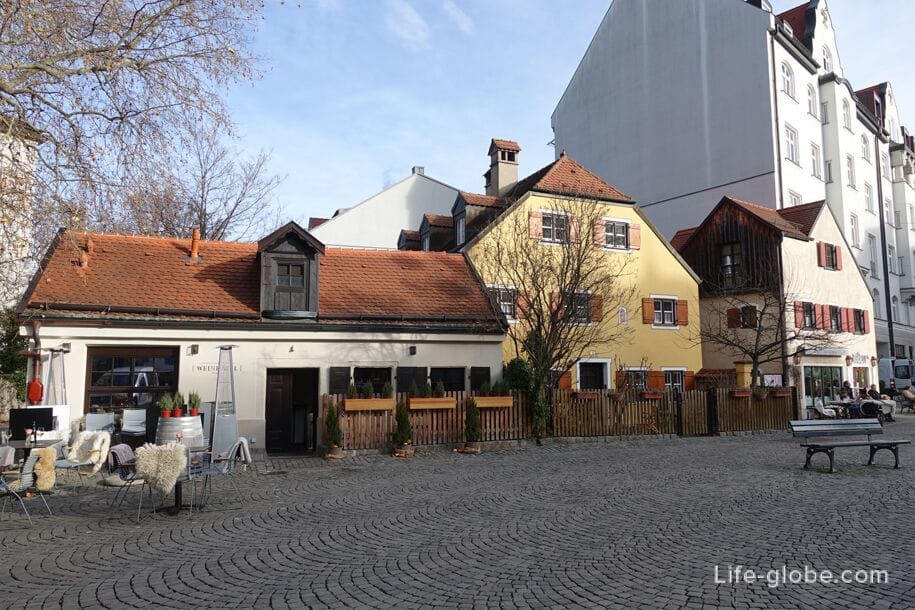
The house on the street Preysingstrasse 71, which is referred to as "the Winding courtyard" (Kriechbaumhof) was originally built in the 17th century in the style of an Alpine farm.
Because of disrepair in 1976 the building was demolished, and the individual parts are saved. In 1985, the house was rebuilt with many original designs. "The new building" belongs to the Munich district office.
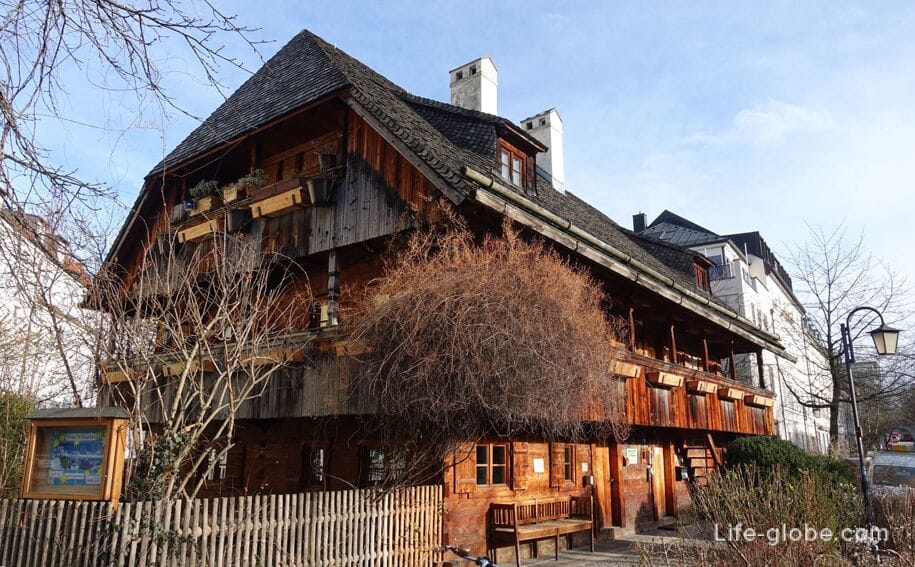
Home "Üblacker" (Üblacker-Häusl), located at: Preysingstrasse 58, was built in the late 18th century and was one of the many ordinary houses of that time having the form of condominium - house for two families.
The city of Munich acquired the building in 1966. After the last residents were evicted, Walker Haucl was added to the list of monuments and restored.
In the house there are two small Museum rooms showing the environment and the working life of past centuries. Another room in the house is used for exhibitions and events. Opening hours: Wednesday and Thursday from 17:00 to 19:00 hours; Friday and Sunday from 10:00 to 12:00 hours.
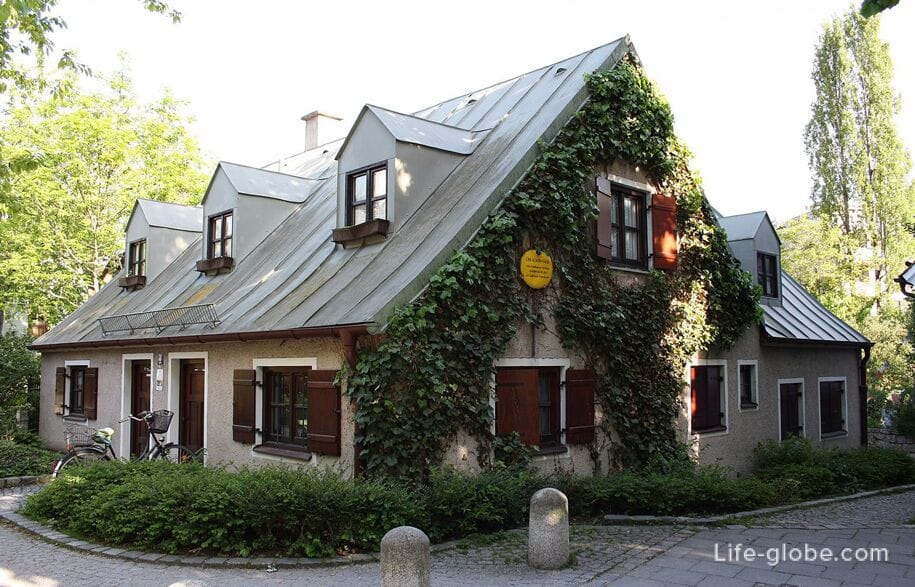
Youth Church (Jugendkirche), located at: Preysingstrasse 85, is used as the profile of the Church for Church activities with young people.
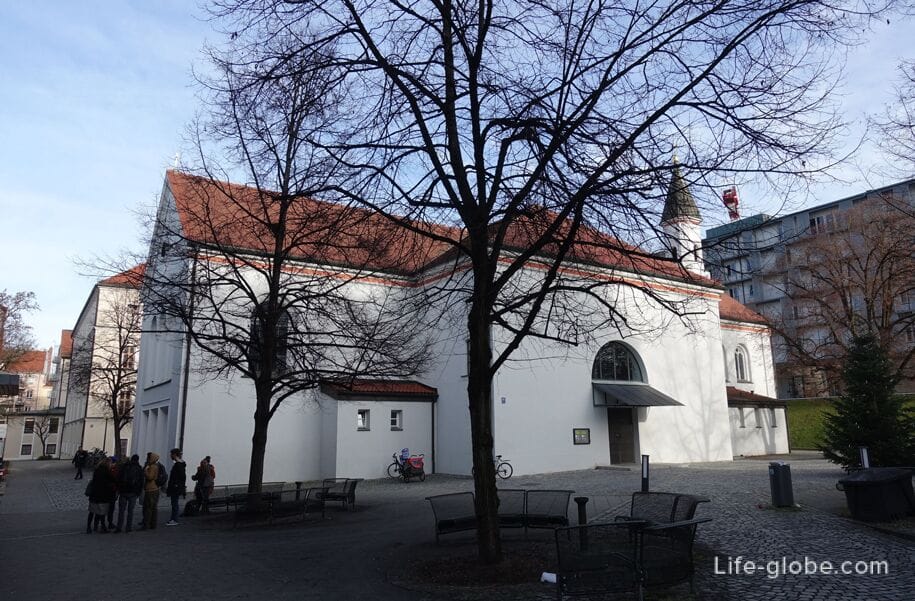
Currently, the district of AU-Haidhausen is a fairly quiet residential and commercial district of the city, which attracts the attention of guests due, including proximity to the city center, a small cozy squares, quiet streets, some of the significant attractions of the Park and the river ISAR, which flows along the Western border of the district.
The area is famous for its variety of shops and boutiques, cafes and restaurants which offer variety of cuisines of the world (traditional German, Austrian, French, Spanish, Greek, Japanese, etc.).
Since time immemorial within the area were Breweries, because the terrain offered good locations for deep wells and cellars for storing beer. Two former major Breweries in the area there was beer restaurants: "Unionsbräu", located at: Einsteinstrasse 42 (Einsteinstraße) and "Hofbräukeller" with a beer garden, which is considered one of the largest and best in Munich, located at: Innere Wiener Strasse 19 (Innere Wiener Straße).
Photo of the beer garden restaurant "Hofbraukeller"
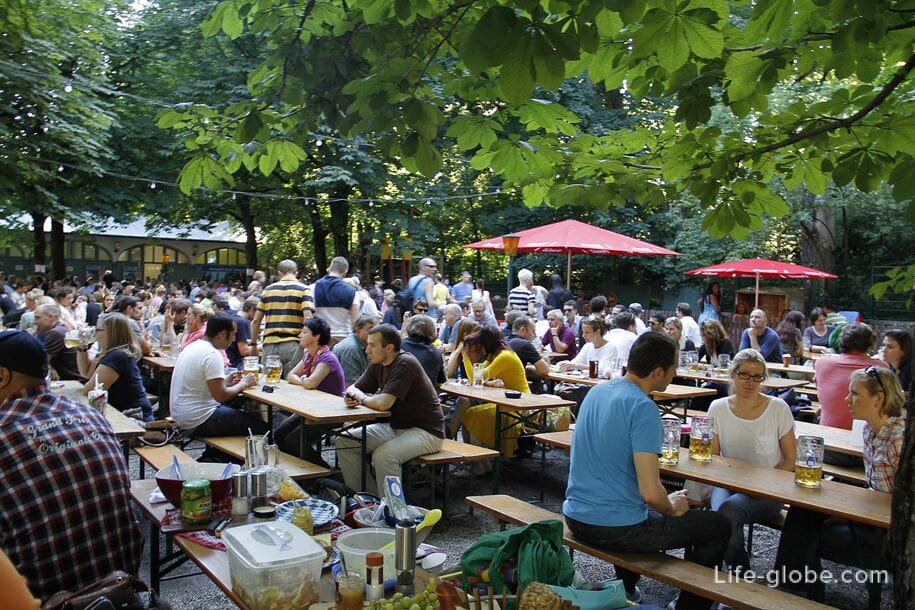
Also in the area of praise:
- tavern "Ayinger Wirtshaus in der Au", decorated in a rustic style, which offers Bavarian cuisine and a traditional beer. The tavern is located in a building with a 3-star hotel Platzl Marias
Address: Mariahilfplatz, 4 (Mariahilfplatz). Website: ayinger-in-der-au;
- restaurant "Klinglwirt", which offers a small selection of regional Bavarian dishes are homemade, and the meat is used exclusively from organic farming.
Address: Balanstrasse, 16 (Balanstrasse). Website: klinglwirt;
- brewery and German restaurant, the "Paulaner am Nockherberg" with beer garden and the possibility of tasting beer "kits" and visiting pubs tours.
Address: Höhenstraße, 77 (Hochstraße). Website: paulaner-nockherberg.
- the family cafe "Glückskind" with a children's corner.
Address: Seariders, 9 (Seeriederstrasse). Website: cafe-glueckskind-muenchen.
Perhaps the most attractive area is a historic area of Vienna (Wiener Platz / Wiener the ground), which since 1889 and today operates a small permanent food market. Market square is open every day except Sunday.
Also on the square is notable historic buildings and fountain Fischerboel (Fischerbuberl-Brunnen) in the upper Central part of which is depicted a naked boy in Panama, standing on a globe and holding in each hand a fish. Read more about Vienna square...
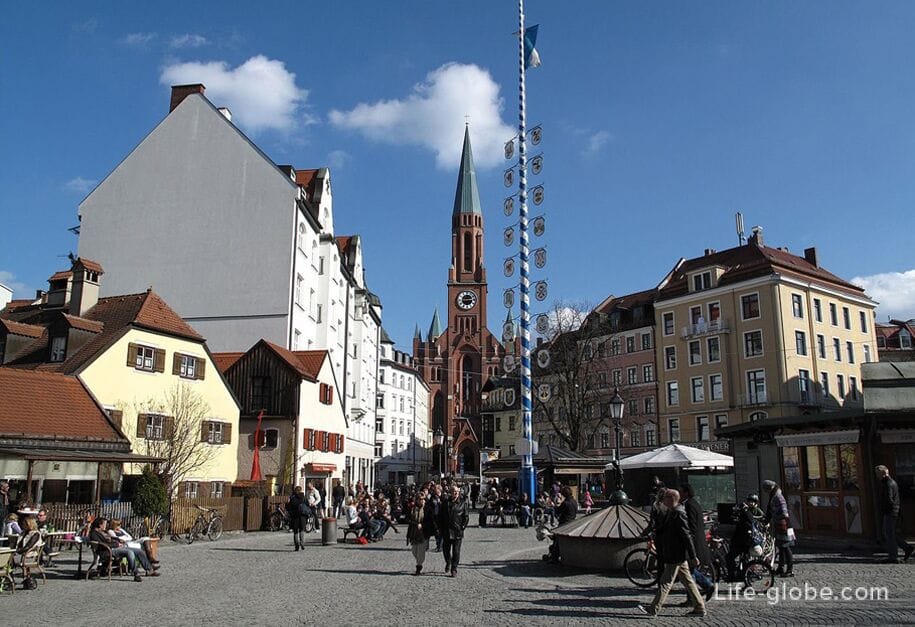
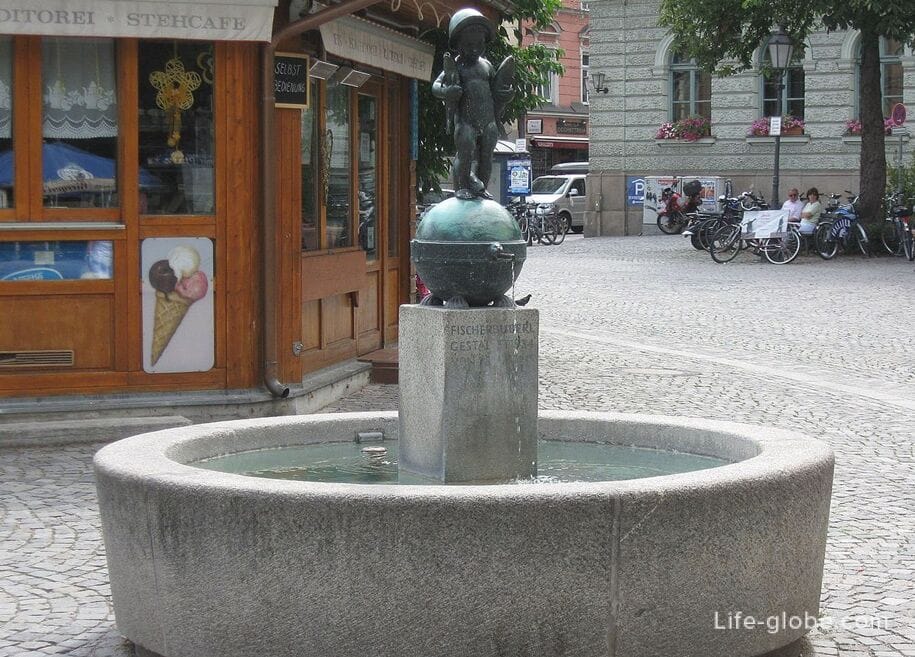
Square Weisenburger (Weißenburger Platz / weisenburger the Ground) is the center of the so-called "French quarter" in quarter Haidhausen. The name and design of the French quarter have a historical origin: the district was created in 1872 after the German victory in the Franco-Prussian war (1870-1871.), then the planners decided to create the squares and streets based on the French model - streets lead to squares in the shape of a star. The streets and squares of the "French quarter" their names from places where the German army fought during the Franco-Prussian war.
The square itself Weisenburger named after the French town of Weisenburg (today Wissembourg) in the region Grand-est.
In the center of the square is the so-called glass Palace fountain (Glaspalastbrunnen) created by Augustus Voight in 1853. Once the fountain was in a Glass Palace (now not there) in the old Botanical garden in the Maxvorstadt Munich, but was later moved to its present location.
In warm time of year on the area of planted flowers, and guests and locals relax on benches.
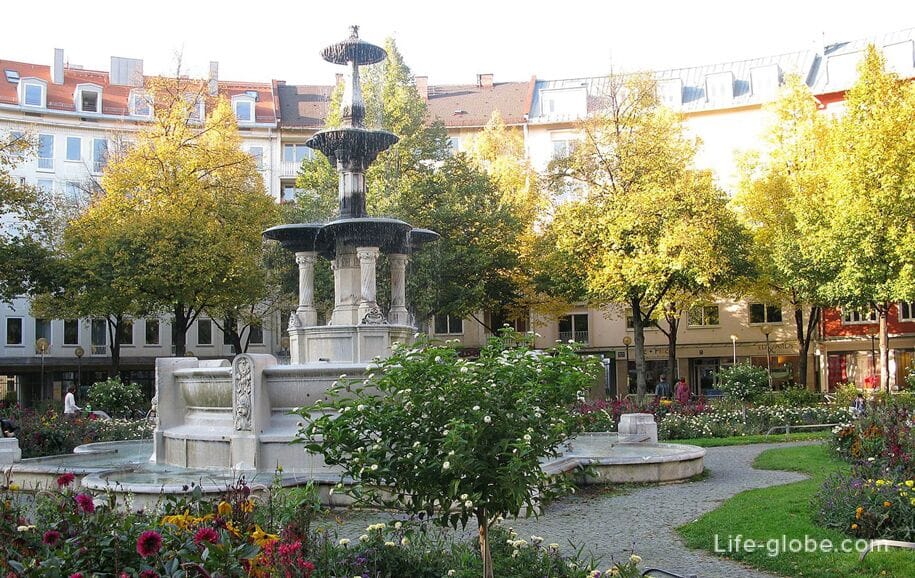
On Christmas eve in the square Weisenburger operates a small and cosy Christmas marketwhere they sell drink, including warming mulled wine, food (sausages, cabbage, etc), snacks, food, sweets and Souvenirs.

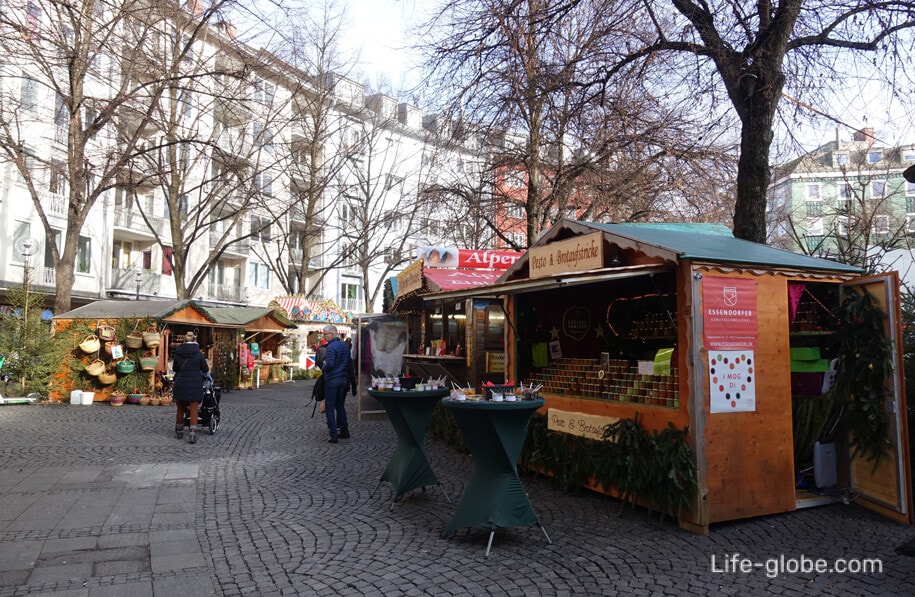
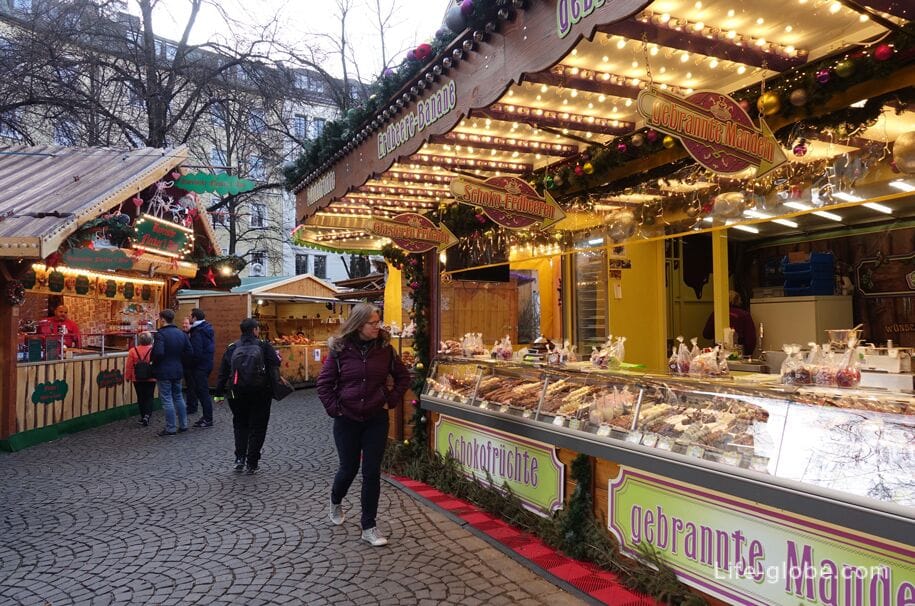

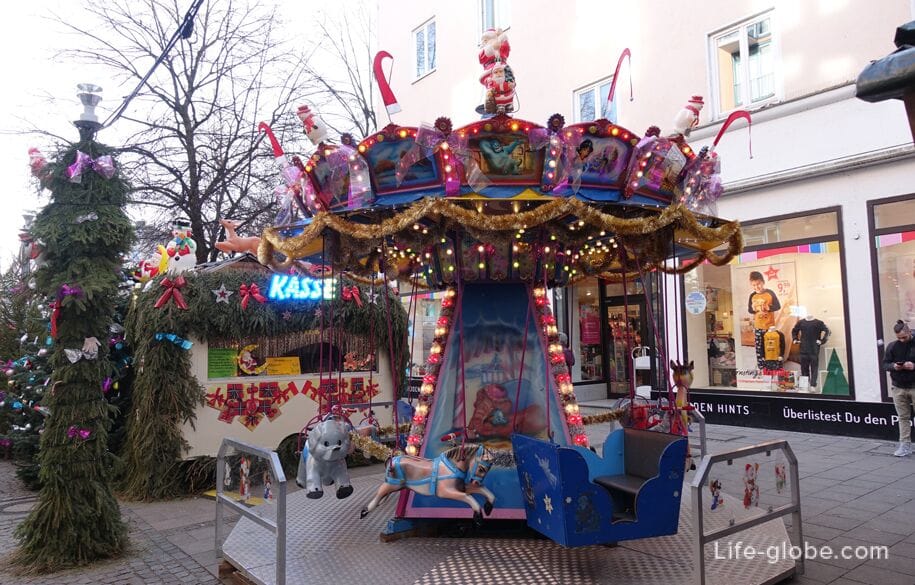
Mariahilfplatz (Mariahilfplatz) famous, above all, the fact that three times in the year it held some of the largest traditional fairs to Munich - "Auer Dult" (translation: "valley fair"): in the spring in may (May-Dult / Mai-Dult), in the summer in July or early August (Jacobi-Dult / Jakobi-Dult) and in the fall in October (Kirchweih Dult / Kirchweih-Dult).
Each of the fairs lasts for 9 days.
At the fair: a mix of thrill rides, handmade accessories, Housewares, Antiques and culinary delights, which attracts many visitors.
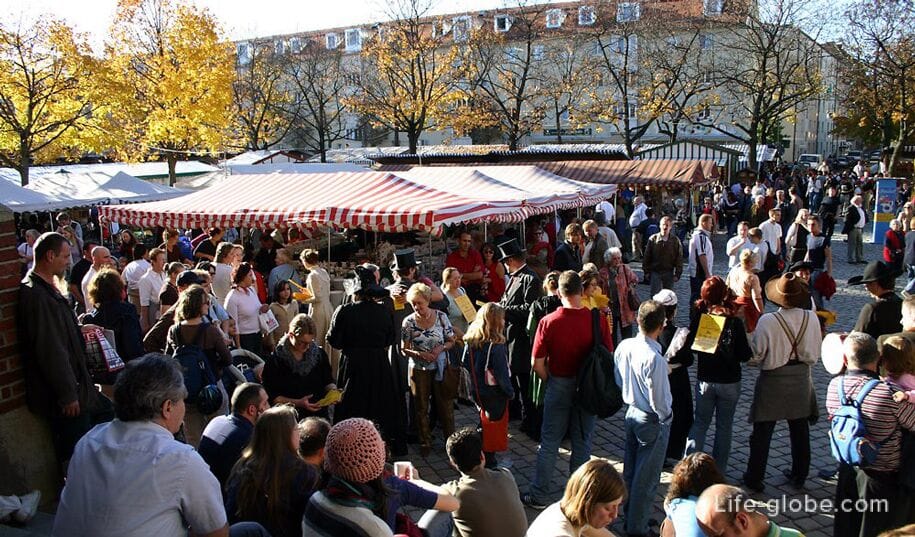
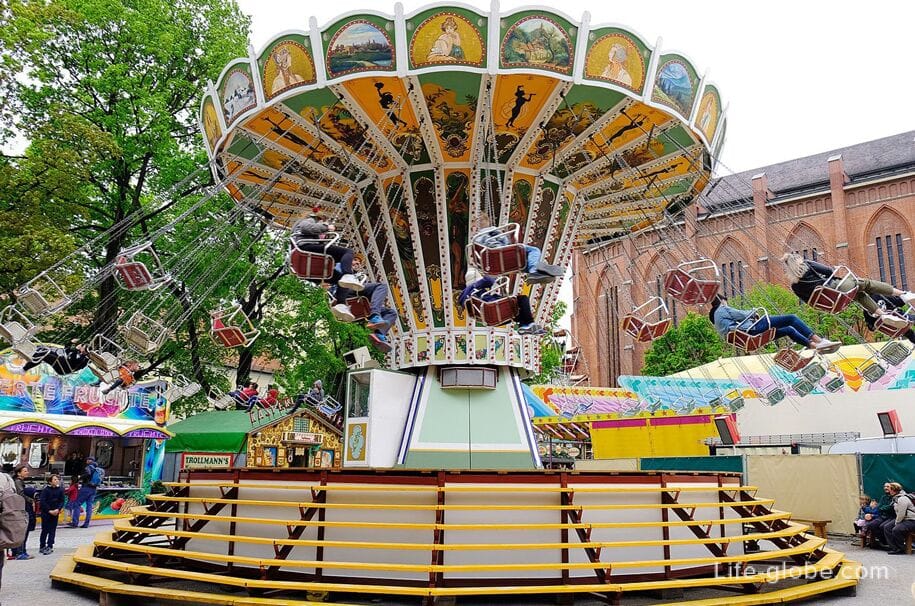
In the centre of the square Mariahilfplatz dominates the neo-Gothic Catholic parish Church of Mariahilf (Mariahilfkirche / Mariahilfkirche), which is the main Church of the district of AU and is considered a model of Gothic Church buildings of the 19th century.
The construction of the Church was carried out from 1831 to 1839 years. The Church has a high tower that reaches 93 meters. The Church is the body.
The Shrine is one of three Gothic revival churches of Munich. The other two: Holy cross Church (Pfarrkirche Heilig Kreuz) and the Church of St. John the Baptist (St. Johann Baptist), also have similar monumental brick style and is located on the East side of the ISAR.
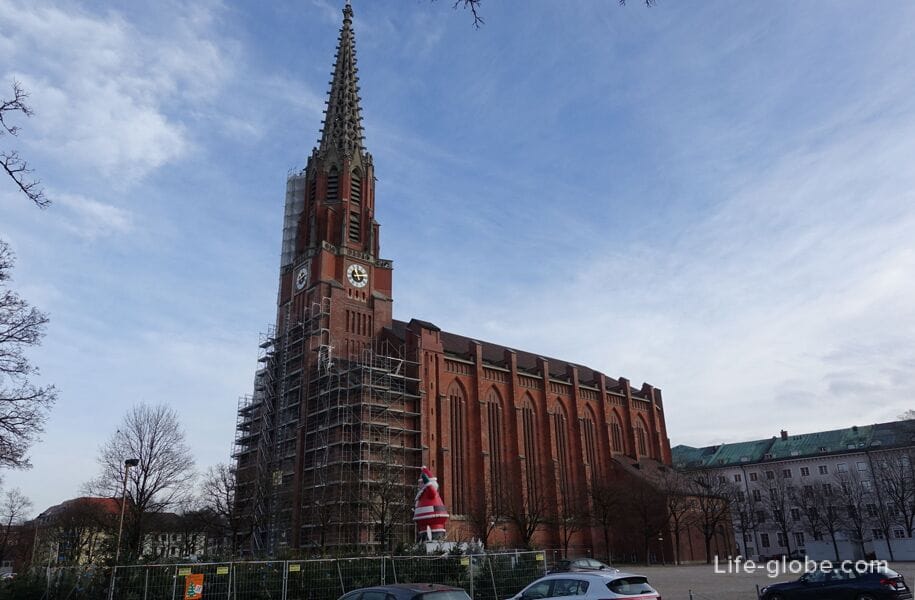
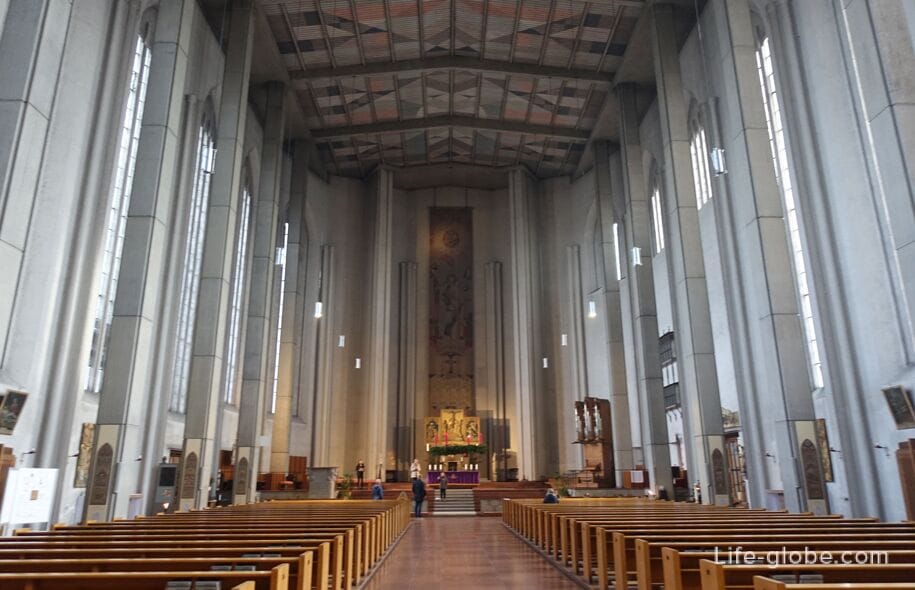
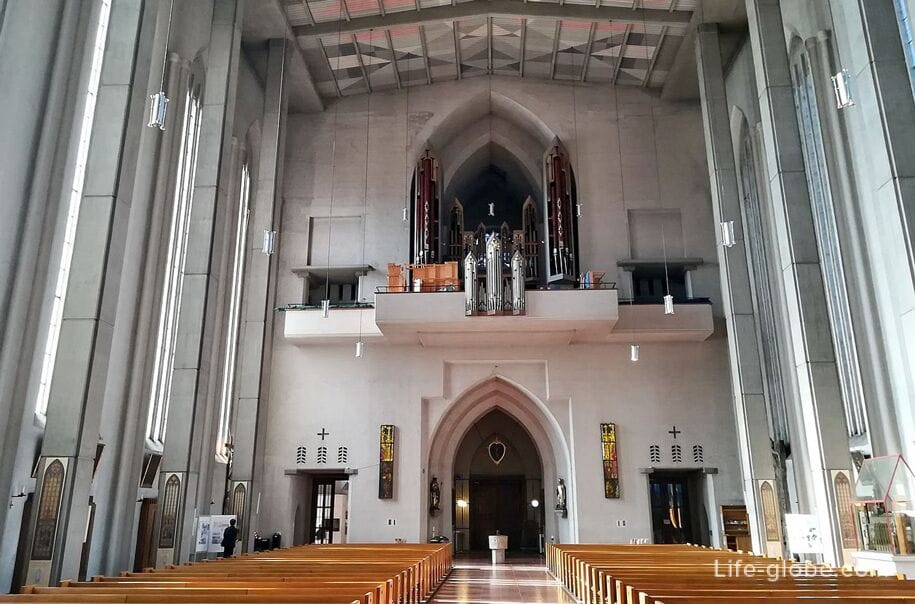
In small urban Park Crokepark (Kronepark) are Stinkwater fountain (Brunnen Steinquader) and a children's Playground.

Across the street from the Park Crokepark located terrace Nockherberg (Nockherberg), whose name often used to refer to part of the Park. The strong beer festival is held annually during lent on the terrace and in the main hall of the restaurant Paulaner (Paulaner am Nockherberg). The holiday begins around the Day of St. Joseph (19 March) and lasts for 17 days. The festival is associated with traditional "feast of the Father" (memorial day April 2) dedicated to the memory of Francis of Paola, founder of the religious order Boulanov.
The name of the raised terrace of "Nockherberg" is often used as a synonym of the festival or its opening touch of the first keg of beer, a seasonal beer (Starkbieranstich / Starkbierzeit).
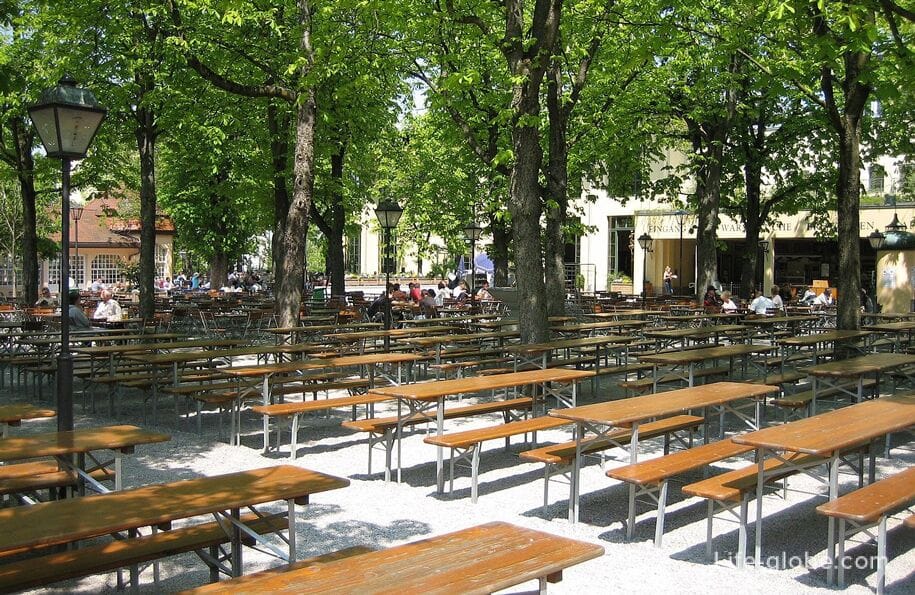
Parkland "Spring plants" (Frühlingsanlagen), located on the banks of the river ISAR, in the South-Western part of the district of AU-Haidhausen, has an area of about 16.3 ha., including includes most of the coastal strip of the river.
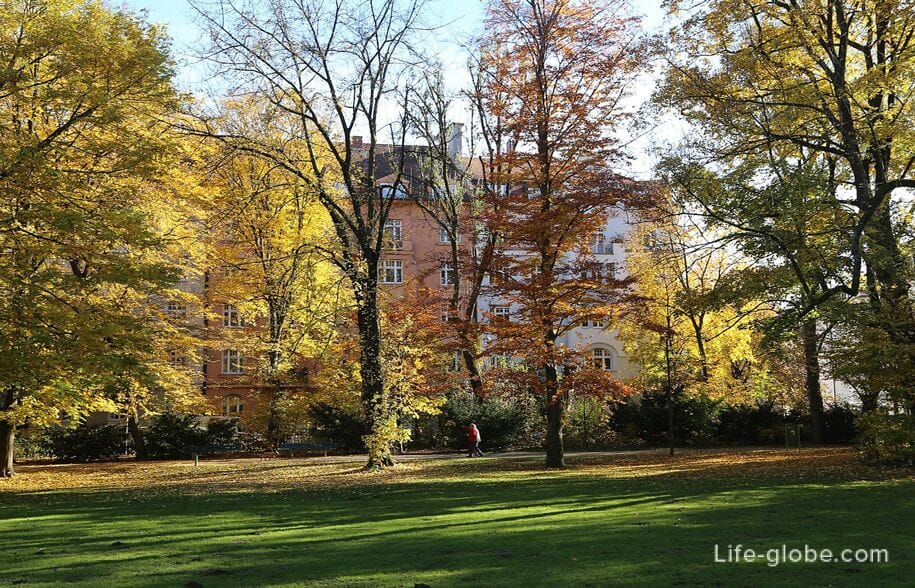
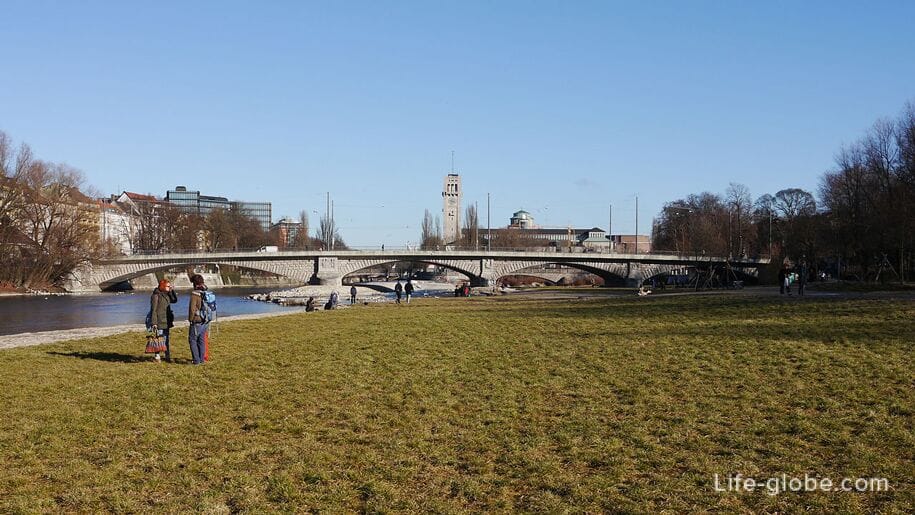
In the Park "Spring plants" are:
- places for walking and recreation, a fountain, playgrounds, cafes;
the stone figure of a man gathering wood ("lumberjack"), mounted on a high rectangular base of limestone. The work was done by German architect and sculptor Rupert von Miller;
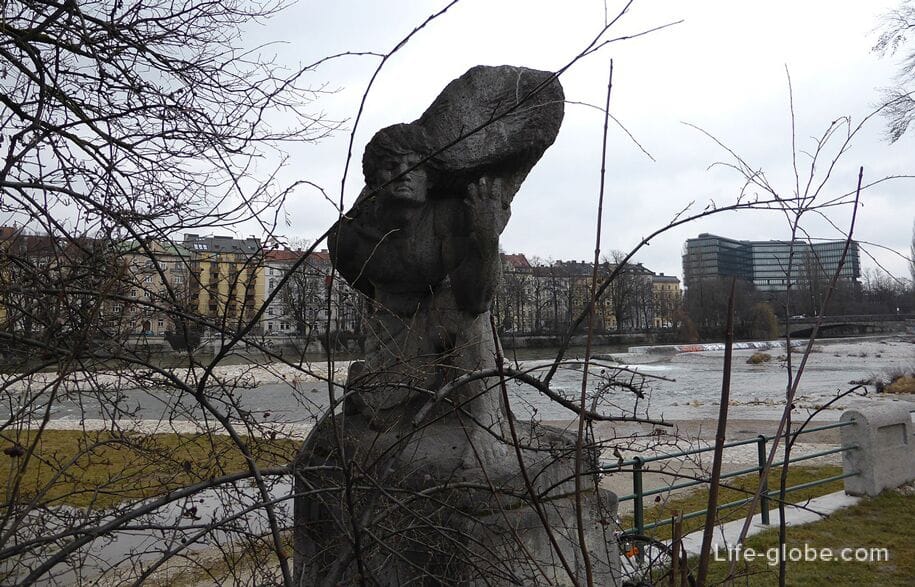
stone figure of "wave Catcher", made of limestone, the Franconian sculptor Karl May;

- bronze female statue (Mädchenstatue), set on a stone Foundation, the work of German sculptor Hans Stangler;
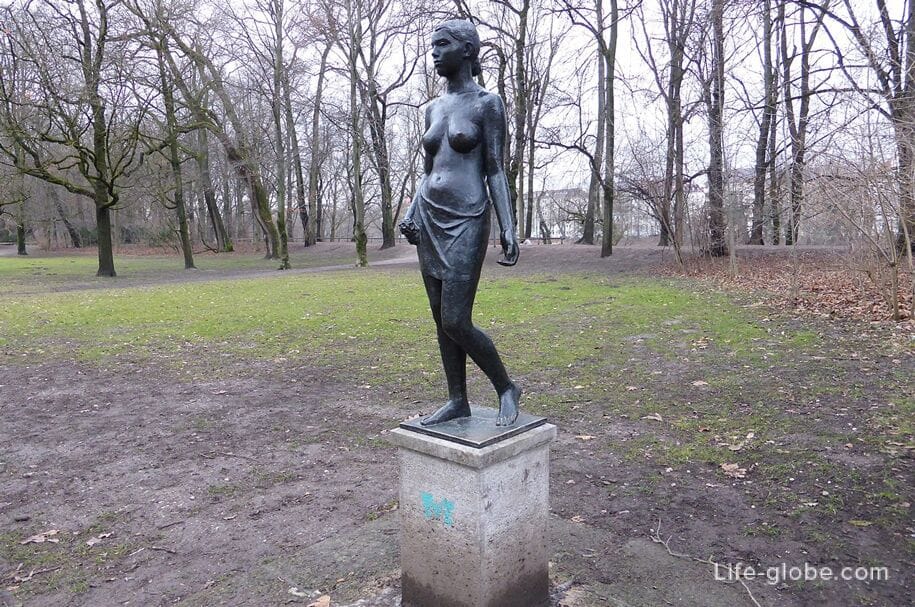
- the chapel (Ölbergkapelle), built in 1904-1905, the years of German architect and Builder Hans Grosselet, with wooden figures of 1840.
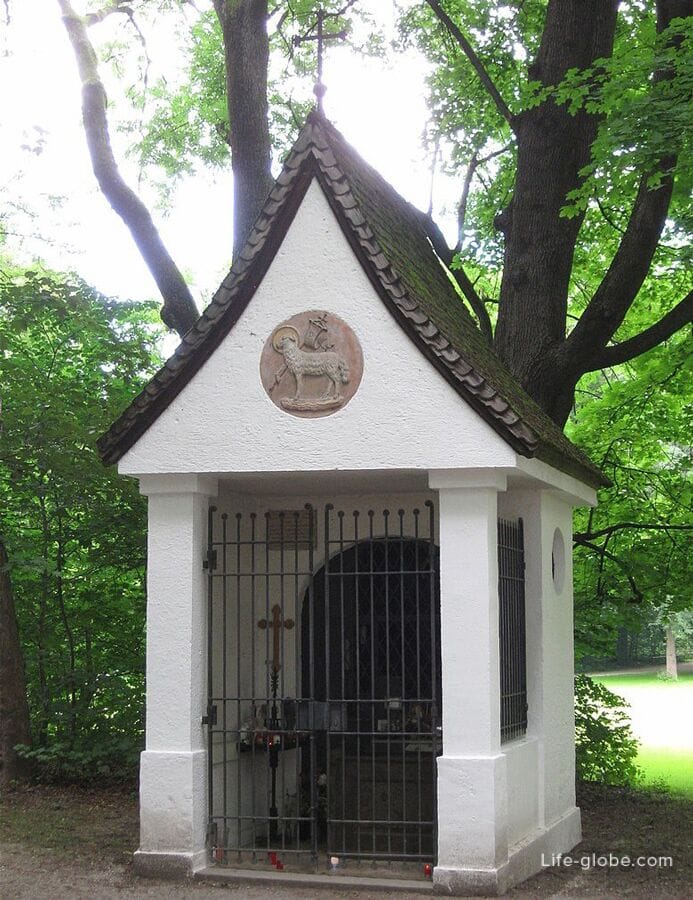
The largest green area in the district of AU-Haidhausen is a Park Maximiliansanlagen (Maximiliansanlagen) is located directly at the banks of the river ISAR.
The Park covers almost 30 hectares, stretches for 2 kilometers along the East Bank of the ISAR and is one of the favorite places in the city for sports, walks and rest.
In the Park: the abundance of greenery, paths and trails for walking, places for rest and terraces.
In the summer on the banks of the river among locals and guests of the city. And in the snowy winter days a small hilly parts of the Park are used for sledding. Read more about the Park Maximiliansanlagen...
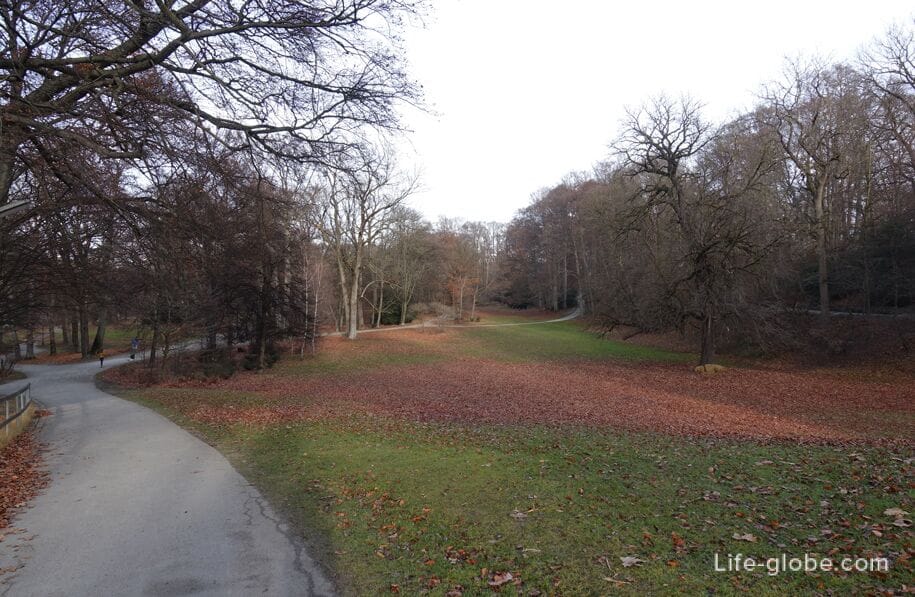
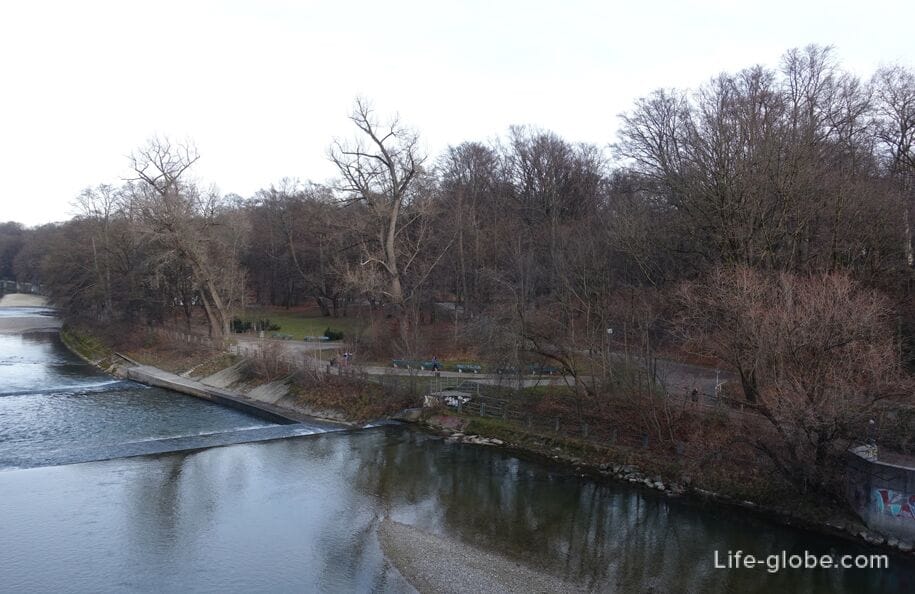
The ISAR river flowing through the city of Munich in the direction from South to North, separates the district of AU-Haidhausen from the historic centre of Munich, located on the West side of the river.
The bridges across the ISAR connects the East and West banks of the river, including two Islands located on the river.
The district of AU-Haidhausen include the North tip of the Museum island (Museumsinsel), which is a small Park with the fountain of Father Rhine (Vater-Rhein-Brunnen), which is decorated with a sculpture of the God of the river Rhine. In the southern and greater part of the Museum island is the German Museum of masterpieces of science and technology (Deutsches Museum), which represents more than 30 thousand exhibits from 50 fields of science and engineering, from astrophysics to cell biology.
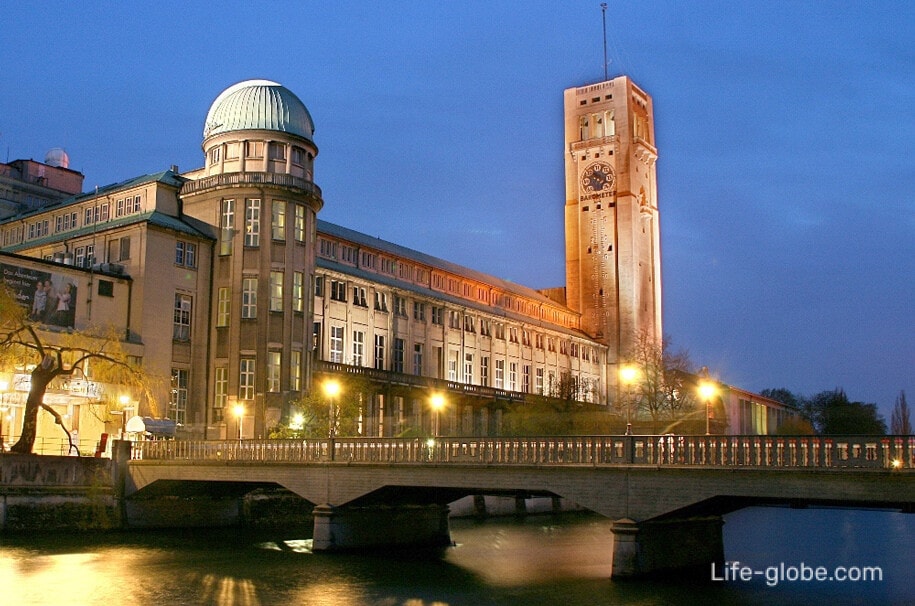
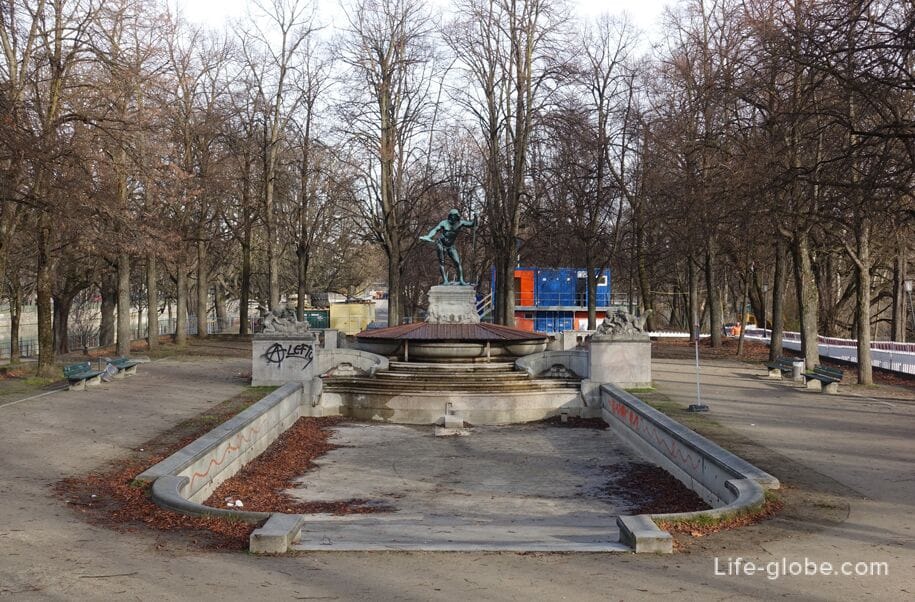
From the Museum island to the Prater island (Praterinsel), the southern extremity of which belongs to the district of AU-Haidhausen, leading the bridge of Versteeg / Versteeg (Wehrsteg) - a pedestrian bridge that crosses over the dam on the river ISAR. Read more about the island of the Prater...
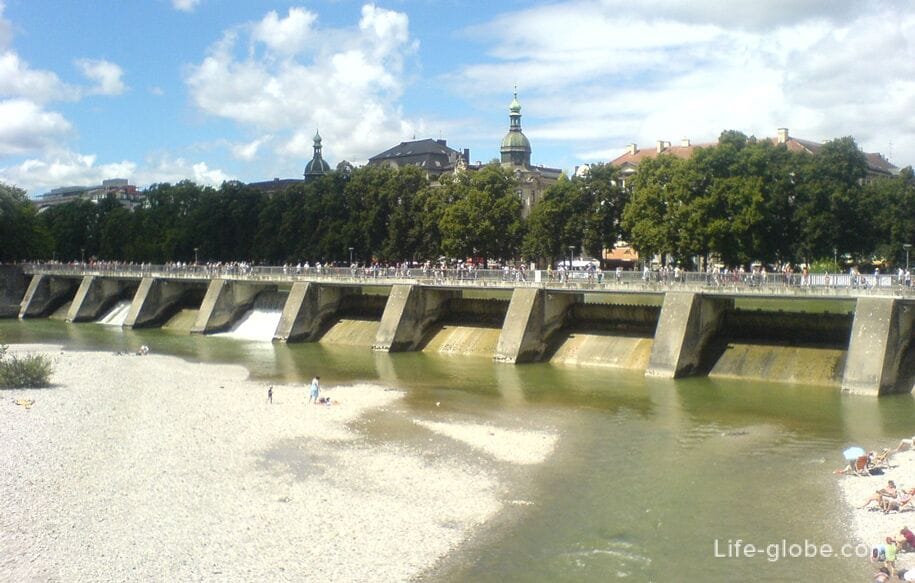
On warm summer days, the coast of izar is a popular spot for picnics and sunbathing. In fact, ISAR can swim, there is a place for surfing. On the coast of the allocated BBQ areas.
On the East side of the river in the district of AU-Haidhausen swimming areas located just below the bridge Reichenbach (Reichenbachbrücke). Read more about recreation on the river ISAR in Munich: swimming, barbeque, surfing, walking and...
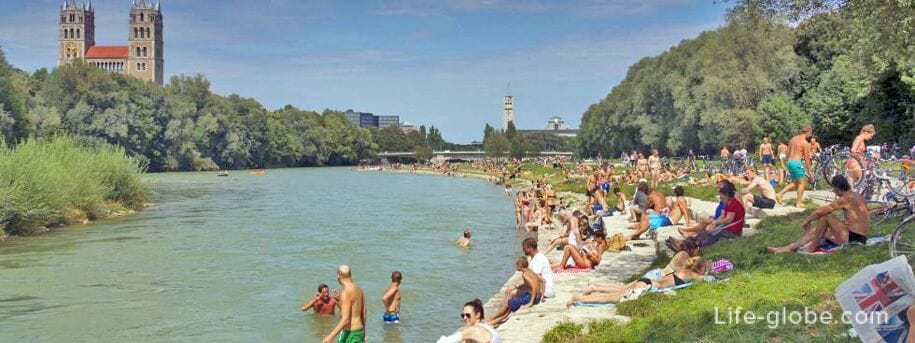
View of the coast of the district of AU-Haidhausen, the river ISAR and St. Maximilian Church, located on the West Bank of the river

In any season you can stroll along the quays along the river and(or) numerous bridges over the river that connects the two banks of the river and the Islands situated on the ISAR.
Some of the bridges represent engineering monuments, while others are completely pedestrian. Read more about the bridges and embankments in the centre of Munich...
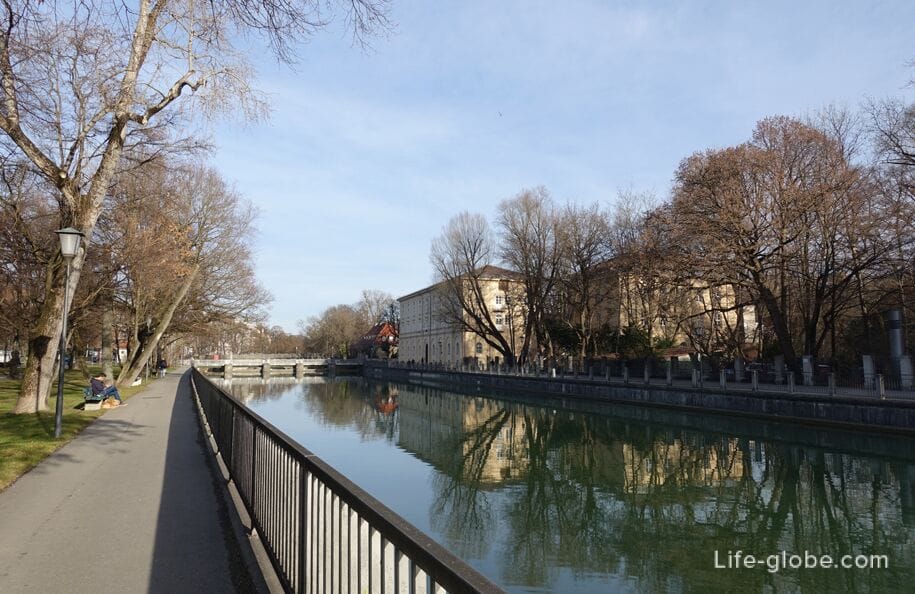
In the Northern part of the district of AU-Haidhausen, on the border with the district of Munich (Bogenhausen), is the historic Villa stuck (Villa Stuck), which was originally a private mansion, built in the years 1897-1898 in modern style to the German painter and sculptor Franz von stuck.
Since 1992, the walls of the Villa houses the Museum of Villa Thing, which presents stored historical room of the Villa with furniture, the artist's Studio, a collection of the works of Franz von stuck and exhibits of applied art of the 19-20 centuries.
Address of the Villa Thing: Prinzregentenstrasse, 60 (Prinzregentenstraße). Website: villastuck. Read more about the Villa Thing, and the Museum...
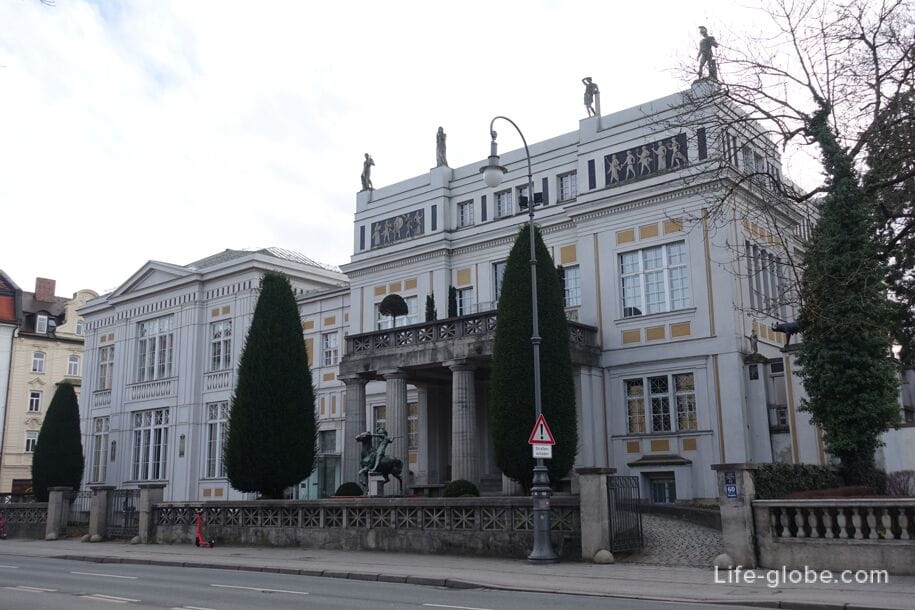
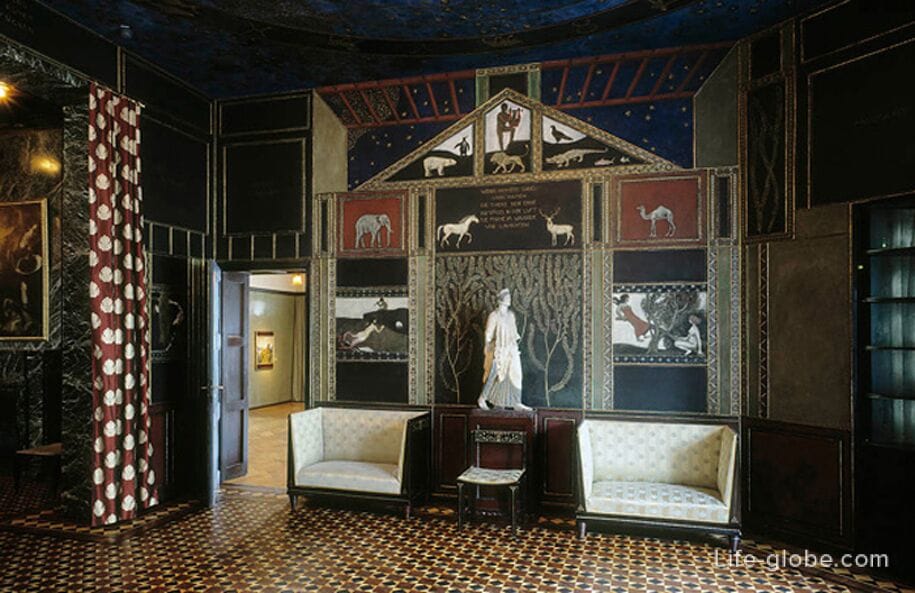
In the gallery "Lothringer13" hold art exhibitions, which alternate with social projects. The work of young and famous artists can be seen in the gallery. A room in the building can also be used as venues. Admission is free.
Gallery address: Lothringer starsse, 13 (Lothringer Straße). Website: lothringer13.
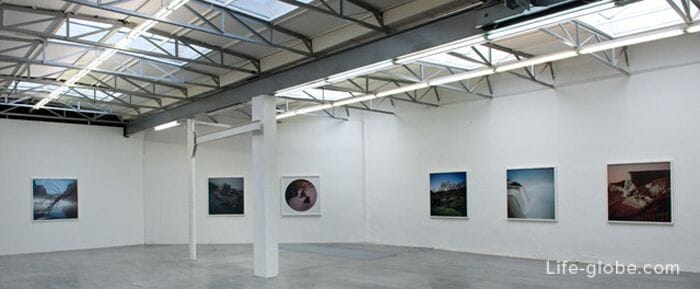
Museum, Haidhausen (Munich Museum) tells the story of the culture and history of the Haidhausen district.
The very three-storey building, which houses the Museum, was built in 1862 in a classical style.
The address of the Museum: Kirchenstrasse, 24 (Kirchenstraße). The website of the Museum: Munich-museum.

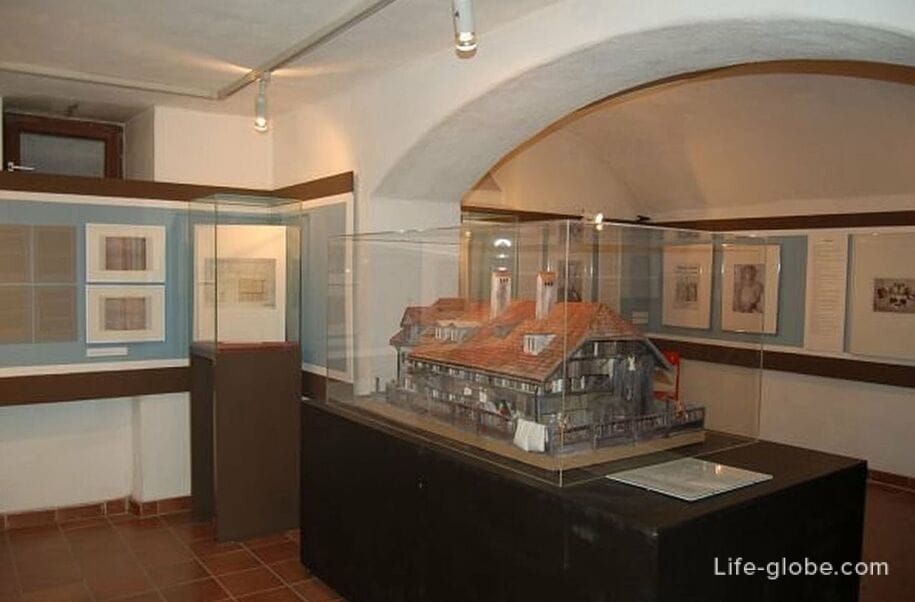
In the cultural center "Gasteig" or "Gasteig" (Gasteig), opened in 1985, are: the city library, a centre for adult education, Conservatory of music Richard Strauss and Philharmonic concert hall.
In Hostage regularly hosts a variety of exhibitions and cultural events. Most of the events of the Munich international film festival and many events of the Munich Biennale (international festival for new music theater) occur in Gasgauge.
Address: Rosenheimer Strasse, 5 (Rosenheimer Straße). Website: gasteig.
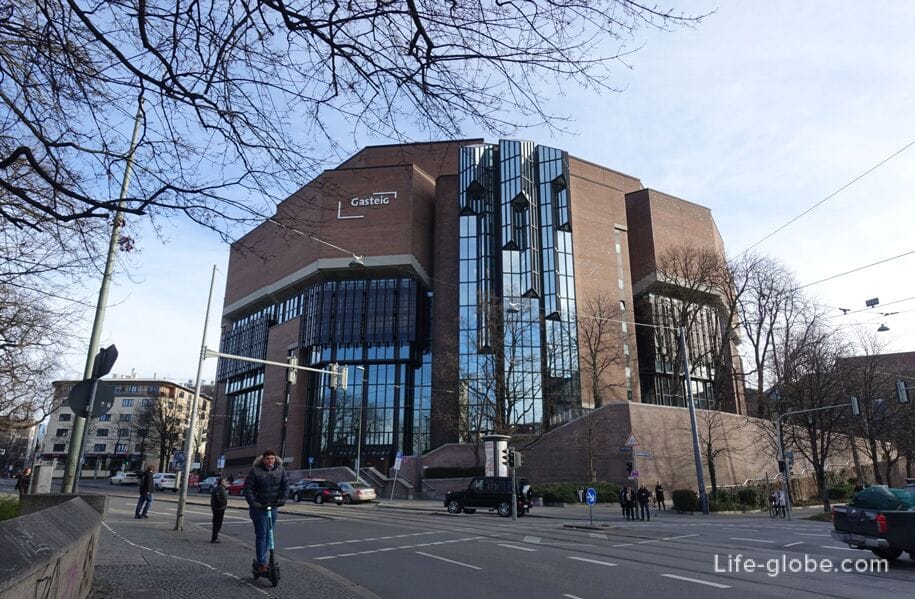
Philharmonic hall Gasteig
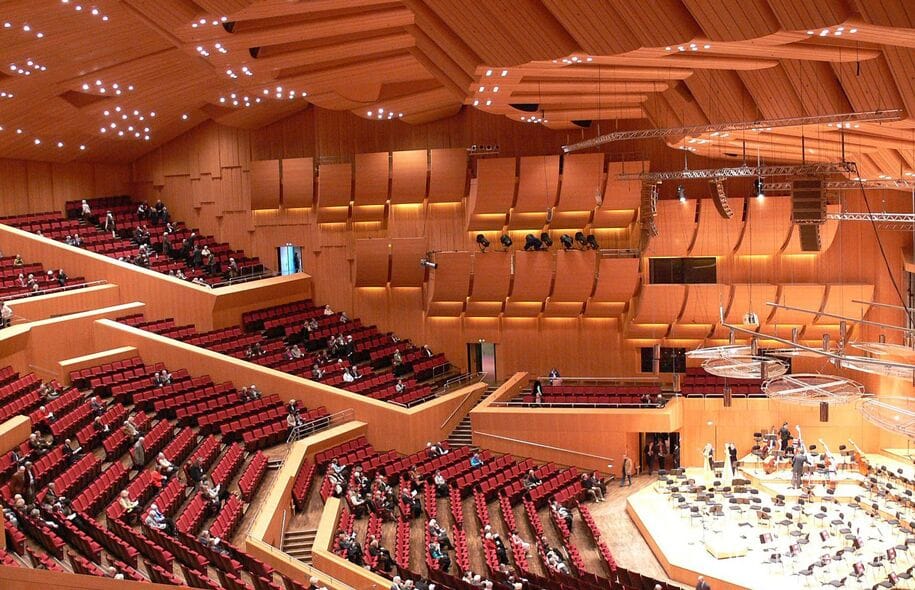
Concert hall and cultural center "Muffatwerk", opened in 1993, is located in a former turbine hall of the first Munich plant built in the classical style in 1837 and is intended for the supply of Haidhausen. The building stands high in the chimney.
In 1992, in the city of Munich is the former power plant was converted into a multifunctional cultural center, the walls of which are now: a concert hall, a pavilion for events, "Ampere", a café and a beer garden "Biergarten Muffatwerk am" with 400 seats.
In the centre you can enjoy live pop and rock concerts, theatrical performances, art exhibitions, club nights, literary readings and other events.
Address: Tellstrasse, 4 (Zellstraße). Website: muffatwerk.
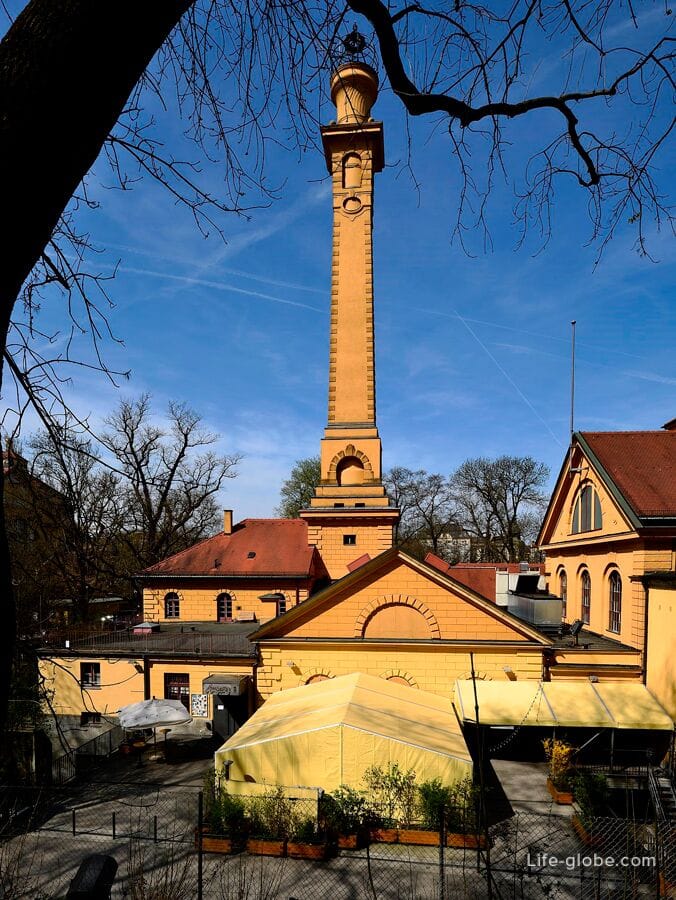

Jazz lovers can spend an evening in a jazz club "Unterfahrt", which exists since 1978, and organizes concerts with local musicians and international jazz scene.
Room jazz club located in the basement of the cultural center "Einstein Kultur", at: Einsteinstrasse, 42 (Einsteinstraße). The website of the jazz club: unterfahrt.
At the North-Western border of the area is a memorial to the angel of the world (Friedensengel / Friedensengel), dedicated to the 25th anniversary of the peace Treaty after the Franco-Prussian war of 1870-1871 years.
Peace monument consists of an open square temple, built in Greco-Ionian pattern, and high columns in the Corinthian style, which is decorated with a bronze figure of a Golden angel.
Near the column is open area - terrace Prinzregent-Luitpold (Prinzregent-Luitpold-Terrasse) with panoramic views of the street Prinzregentenstrasse and part of the historic center of Munich. Read more about memorial angel of peace and observation...
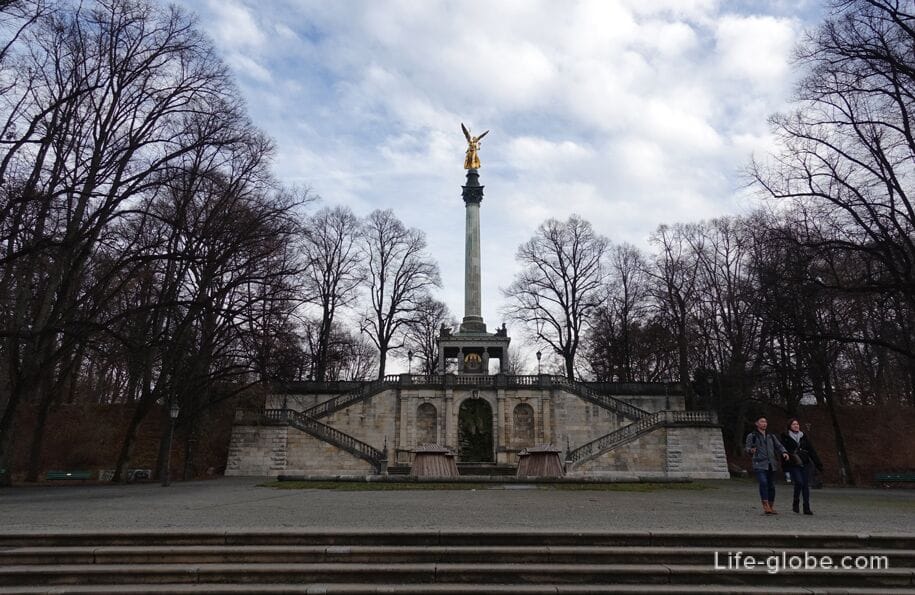
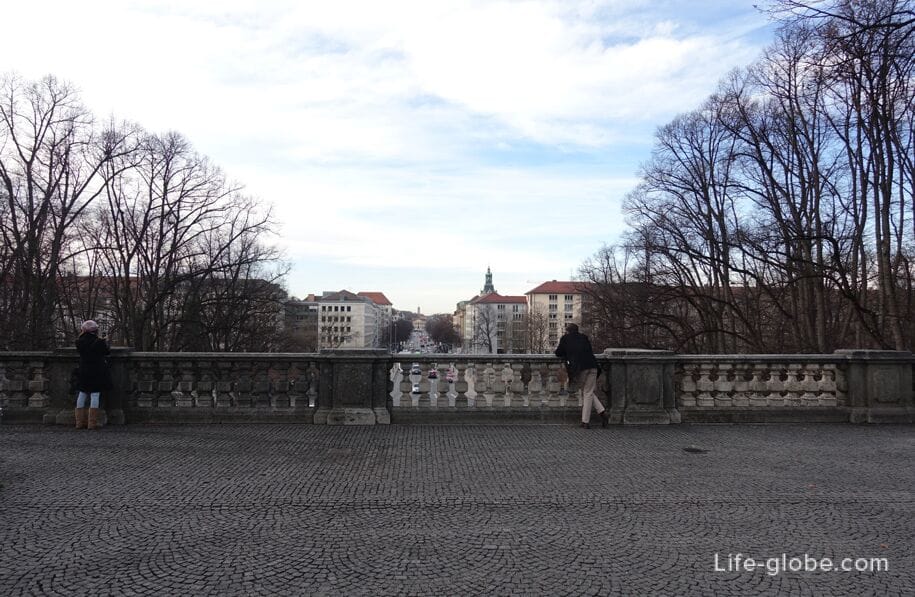
At: Max-Planck-straße 1 (Max-Planck-Straße) is a historic building, the Maximilianeum (Maximilianeum), which is the seat of the Maximilianeum Foundation for gifted students and the seat of the Bavarian Landtag (Bavarian state Parliament). Read more about the Maximilianeum...
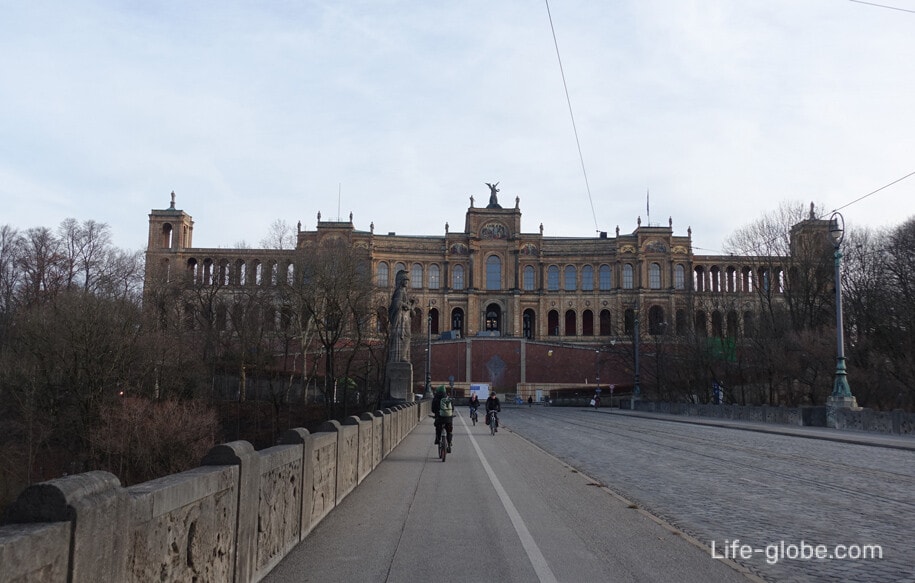
Mullerova city baths (Müller sches Volksbad) was built as a public bath complex with a swimming pool in 1901 in the art Nouveau style with elements of Baroque.
The walls of the building are now: two indoor swimming pools, a steam room and an outdoor patio, bistro, restaurant, pub, massage services and a hairdresser.
Mullerova baths located near bridge of Ludwig, at: Rosenheimer starsse, 1 (Rosenheimer Straße). Read more about Müller's baths...

- fountain Augie (Augia-Brunnen). The figure of the fountain is the Bavarian sculptor Ludwig Michael von Santanera.
The fountain is located at the intersection of Lilienstrasse (Lilienstraße) and Frants-Proeller-straße underground station (Franz-Prüller-Straße);
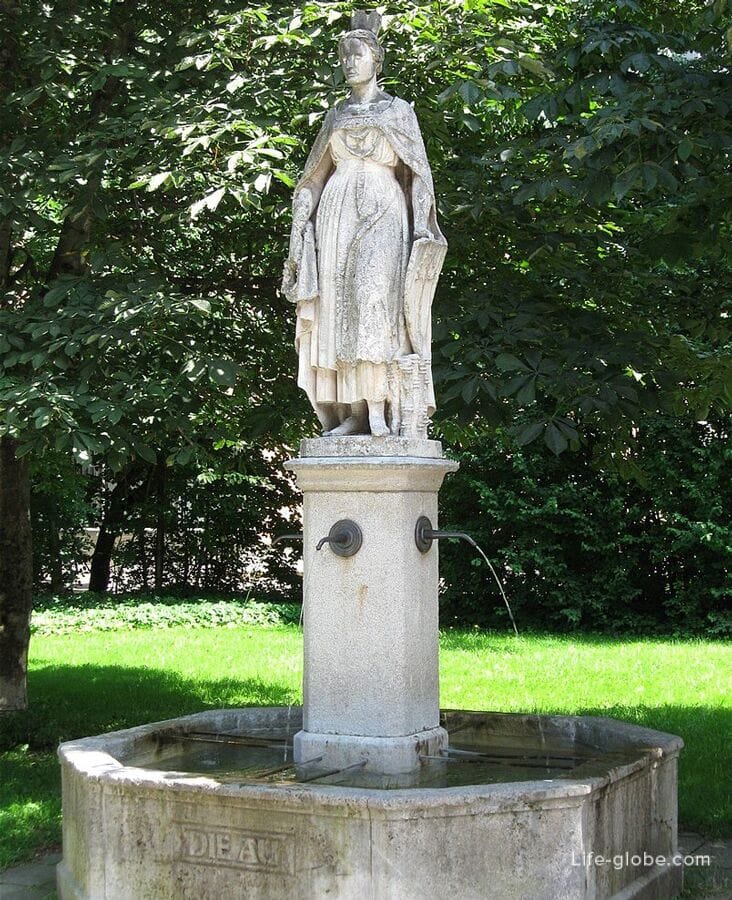
- the sculpture "the Dreamer" (Bukolika / Bucolic), 1984, the work of the German sculptor Martin Mayer. The sculpture is located at the Ludwig bridge, in the Karl-müller-Weg (Karl-Müller-Weg).
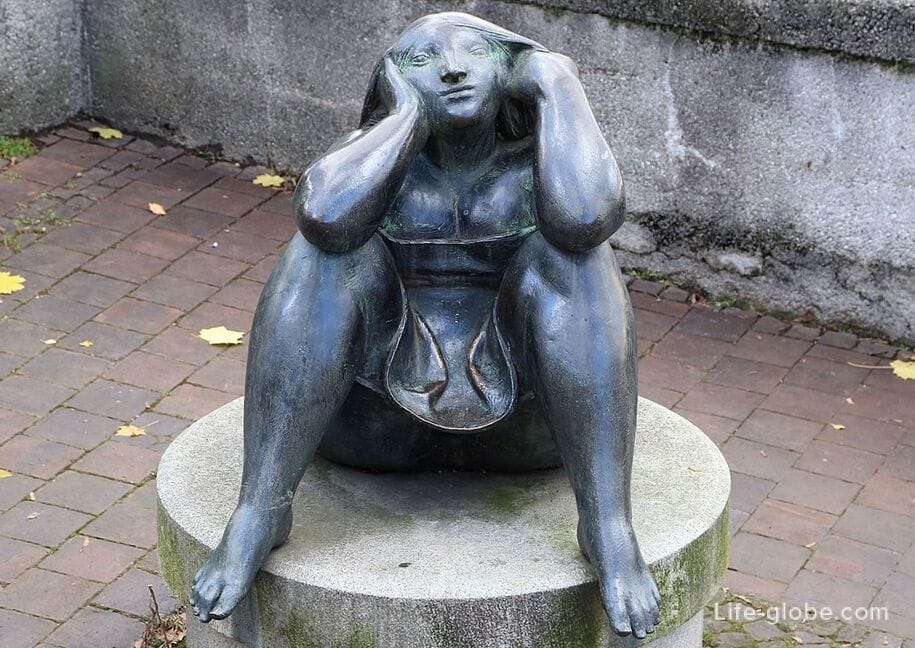
The Church of St. Nicholas Hastega (St. Nikolai am Gasteig) - a small Roman Catholic Church dedicated to St. Nikolaus von Myra.
The basis of the former hospital Church is late Gothic style, it was rebuilt in 1660. Because of the Second world war the Church was closed in December 1944, and reopened in late may 1945. Repairs were completed in 1950.

With the rear part of the Church attached to the chapel of Loreto (Loretokapelle / Moratoire), built in 1678. In 1820 the chapel was demolished without permission and rebuilt on a larger scale. During the Second world war, the chapel was completely burnt. 10 December 1955, after reconstruction, was consecrated the altar.
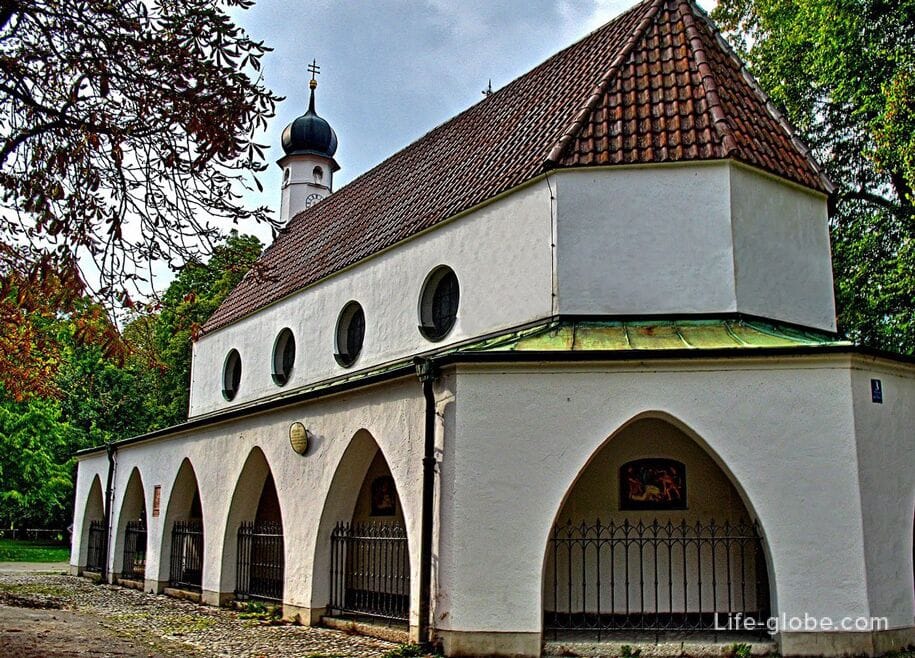
The address of the Church and the chapel: Innere Wiener Strasse, 1 (Innere Wiener Straße).
Evangelical-Lutheran parish Church of St. Johann (Pfarrkirche St. Johannes) was built in 1889 as a fourth Lutheran Church in Munich. The current Church building in neo-Romanesque style dates from the years 1913-1916.
The Church was damaged during the Second world war and from about 1948 was rebuilt and re-usable.
The Church is the body.
The address of the Church: Pricingplan, 1 (Preysingplatz).

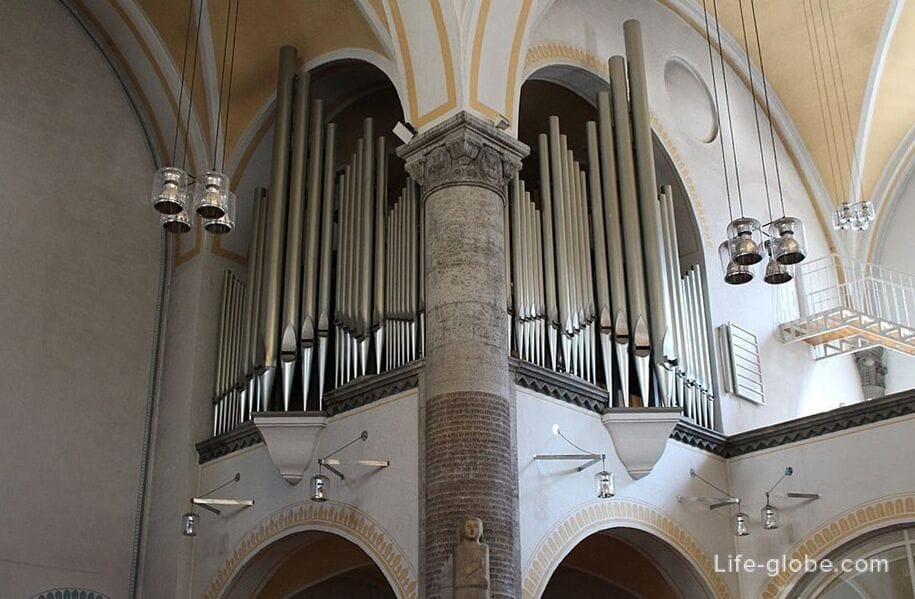
The new parish Church of St John the Baptist Church (Pfarrkirche St. Johann Baptist) was built between 1852 and 1874 years according to the plans of the German architect Matthias Berger in the Gothic revival style. This Church replaced the, by then already an old and smaller Church of the Haidhausen district, which was not enough room for parishioners.
The West Church tower has a height of over 90 meters, making the Shrine one of the highest churches in Munich.
Special attention in the interior of the Church is attracted to the Gothic revival marble main altar, the high stained glass Windows, side altars, Pew for communion and body.
The address of the Church: the Johannisplatz (Johannisplatz). Read more about Church of St. John the Baptist...
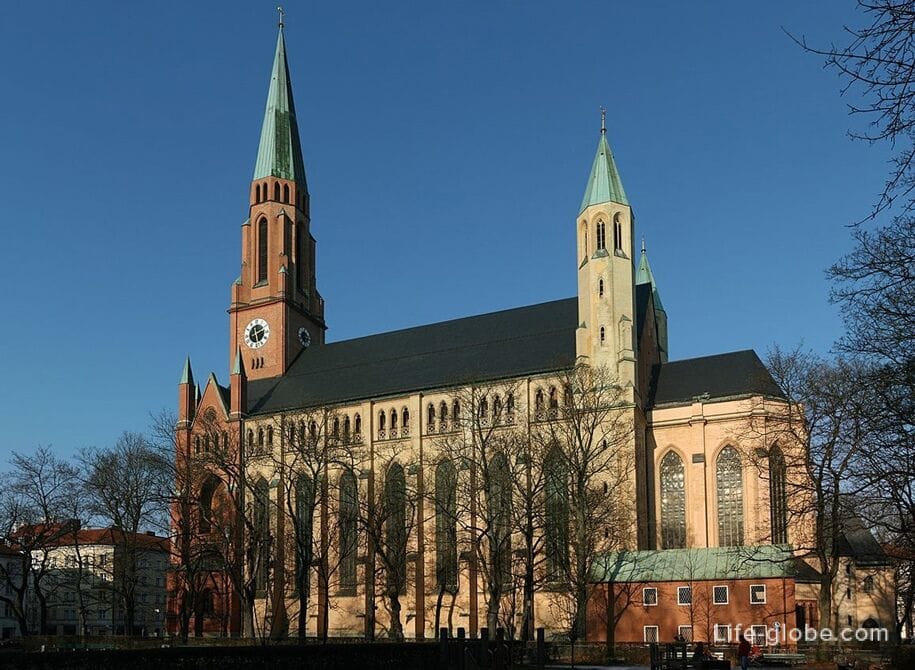
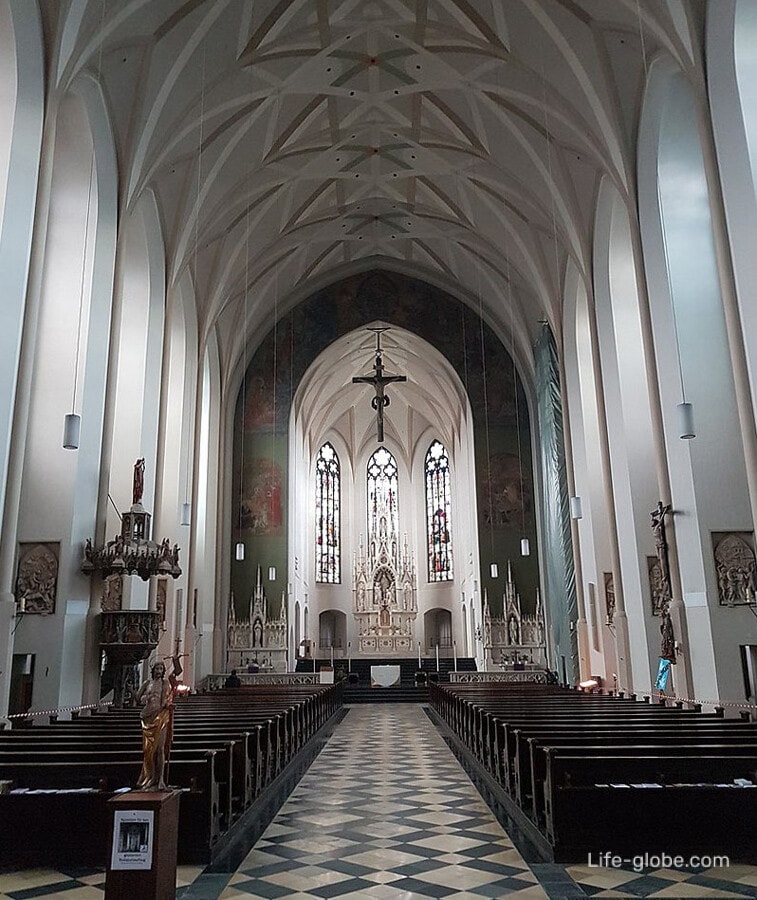
Parish Church of St Wolfgang (Pfarrkirche St. Wolfgang / St. Wolfgang) is a Church in neo-Baroque style.
The Church was built between 1915 and 1920 according to plans by the Munich architect Hans Surra. The consecration of the Church in honor of Bishop Wolfgang of Regensburg in Regensburg was held in 1920.
After the Second world war from the Church was only a tower. Temporary buildings of the parish have served the Church for two decades. They were replaced by a new building between 1964 and 1966 years. Architect Michael Steinbrecher created a brightly lit Church interior with large rear Windows. The Windows were created by the artist from Grafing - Alfred Shopfrom (1917-1992 gg.), who also made a mosaic relief of the "Return of Christ" among groups of people on the back wall of the altar.
The Church has authority.
Address of Church: St.-Wolfgangs-Platz.

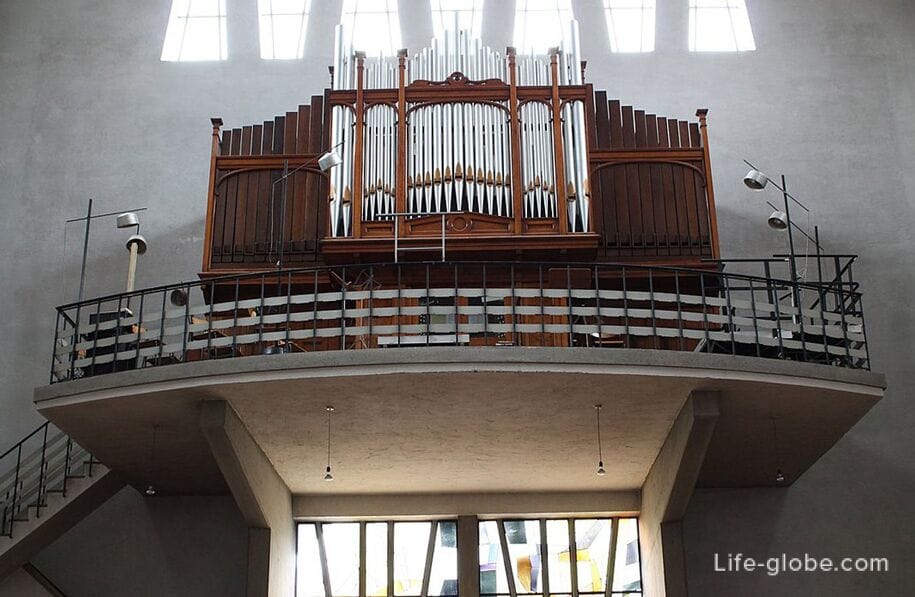
The old parish Church of St John the Baptist (Alte St. Johann Baptist) was first mentioned on February 12 808 of the year.
The cemetery near the Church was founded in 808 year and employs 4,600 graves.
In 1524 John the Baptist is first mentioned as the patron of the Church.
In 1712, as every year, the Church tower was fired to celebrate the feast of St. John. The tower caught fire and completely burned. Was recovered in the same year.
The address of the Church: Kirchenstrasse, 39 (Kirchenstraße).
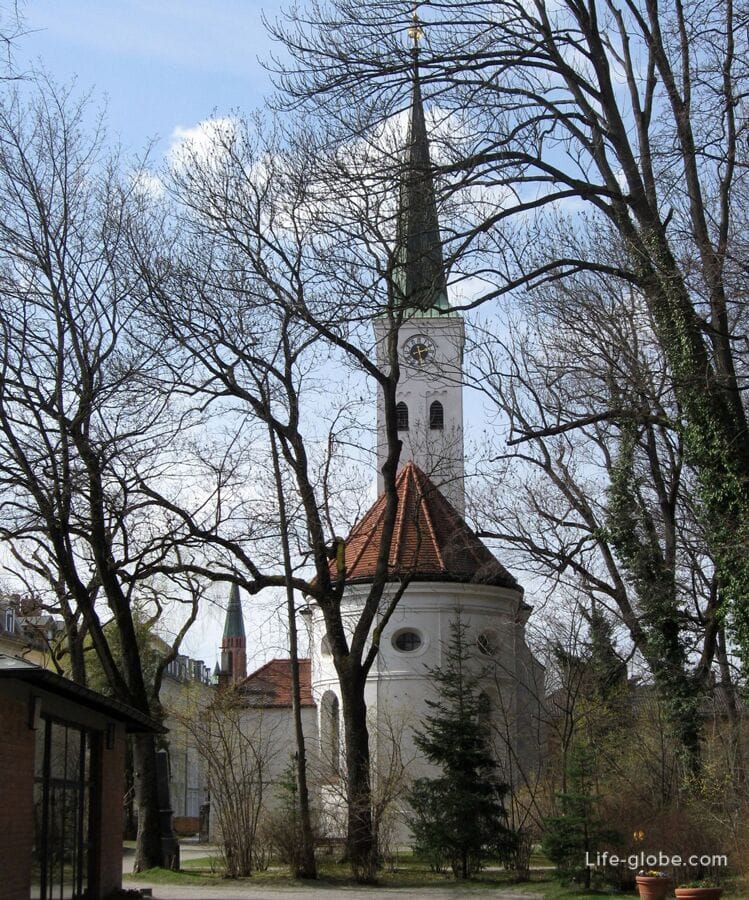
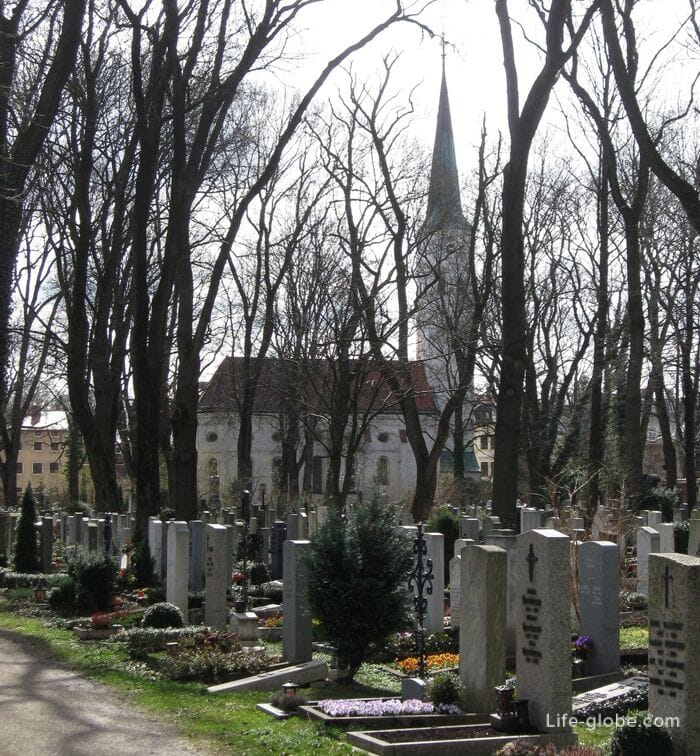
The Church of St. Gabriel (Franziskanerkloster St. Gabriel) is a Catholic parish and monastery of the Franciscan Church.
The Shrine was built in the years 1925-1926, repaired and renovated in 1980-1981 and redesigned by max Faller in the chancel.
The Church is faced with red brick, has a bell tower with a height of 45 meters.
The interior of the Church corresponds to the early Christian Basilica. The Church is the body.
The address of the Church: Versailler Strasse, 20 (Versailler Straße).
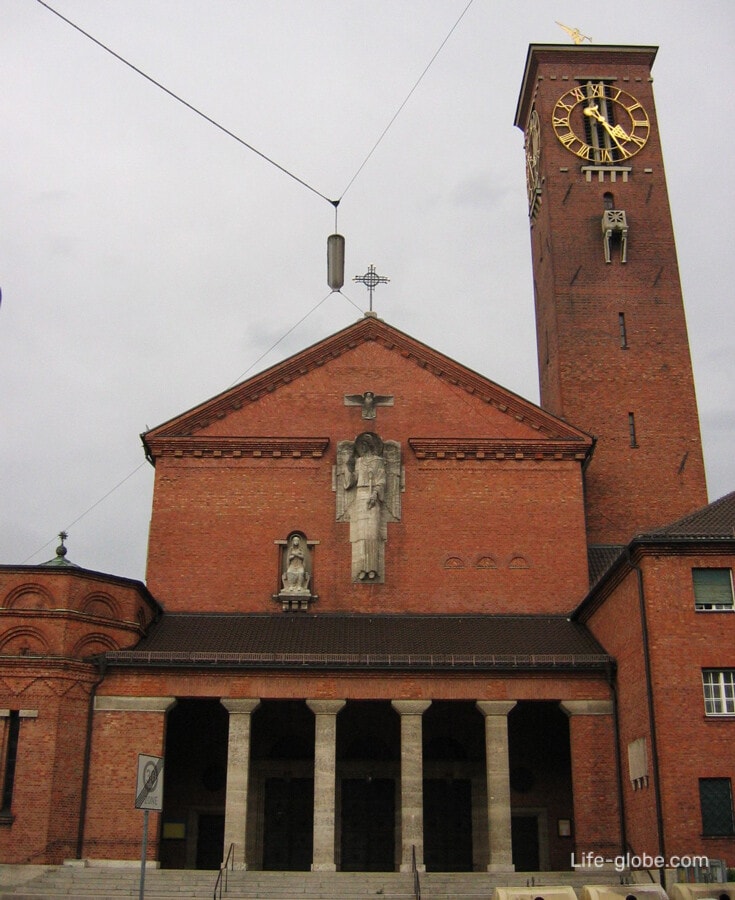
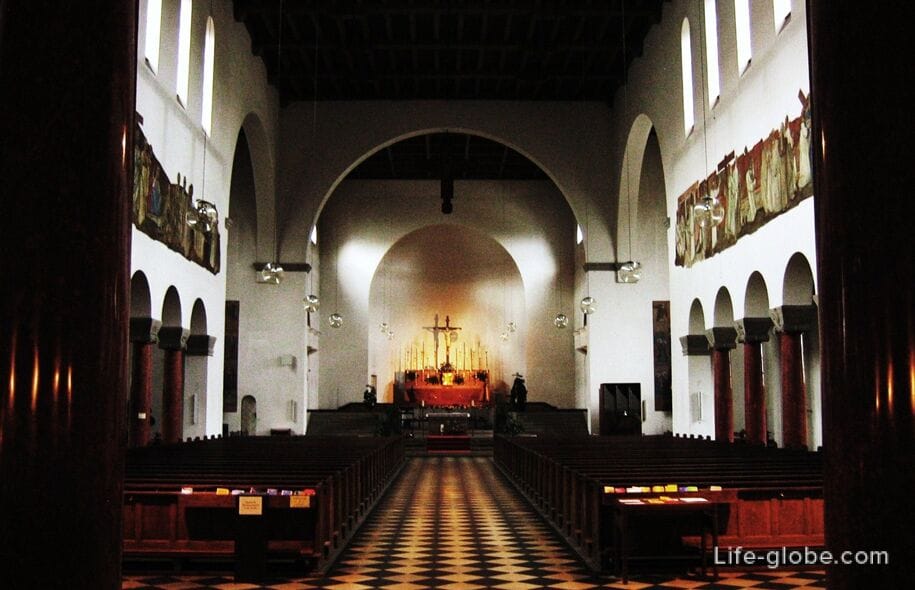
The district of AU-Haidhausen 5 is bordered by the districts: Bogenhausen in the North, Altstadt-Lehel and Munich-Isarvorstadt in the West, Berg am Laim (Berg am Laim) to the East, a Leisure Fasangarten (Obergiesing-Fasangarten) in the South and Untergiesing-Harlaching (Untergiesing-Harlaching) at the level of the river ISAR.
In the Eastern and Central parts of the AU-Haidhausen is a railway that has several stations in/near the area.
In the area (in the area) run commuter trains, buses and trams.

5 star hotel München Palace features a restaurant, a bar, a sauna, a steam bath, a gym, free Wi-Fi and Parking.
In the rooms: parquet floors, a free Minibar, a flat-screen TV and a marble bathroom.
Room rates may include Breakfast. Link to the hotel

The 4-star Novotel München City offers Soundproofed rooms, a Spa centre with a swimming pool, business corner, games room for children, a restaurant, bar, Parking and Wi-Fi.
In the rooms, other amenities include: air conditioning and facilities for making hot drinks.
Room rates may include Breakfast. Link to the hotel
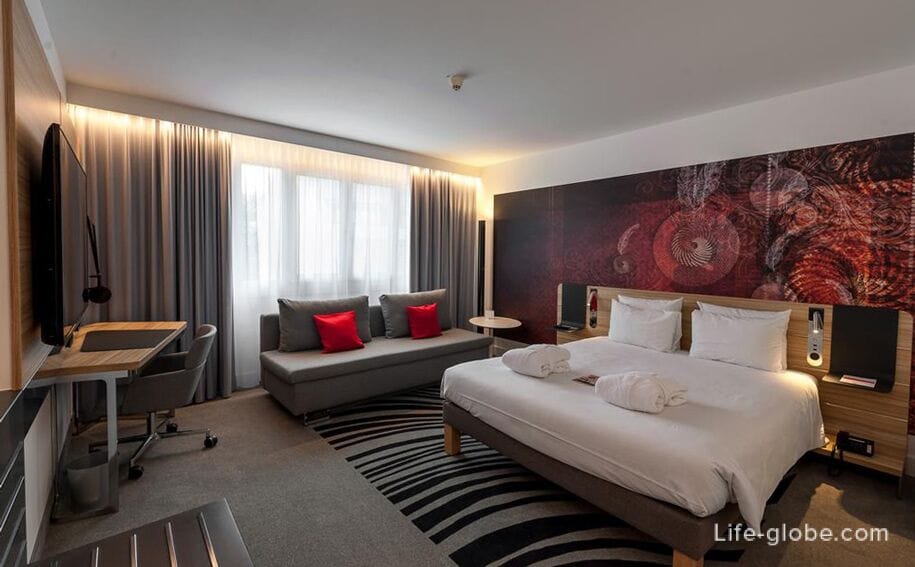
Hotel Ritzi features a restaurant, bar, terrace, tour Desk, and free Wi-Fi.
In the rooms: wardrobe, Desk, flat-screen TV and a private bathroom.
The room price includes Breakfast "buffet". Link to the hotel

The Hilton Munich City with a gym, a restaurant, bar and Parking.
In rooms: air conditioning, flat-screen TV, Desk, tea/coffee facilities. Some rooms overlook the quiet courtyard.
Room rates may include Breakfast. Link to the hotel
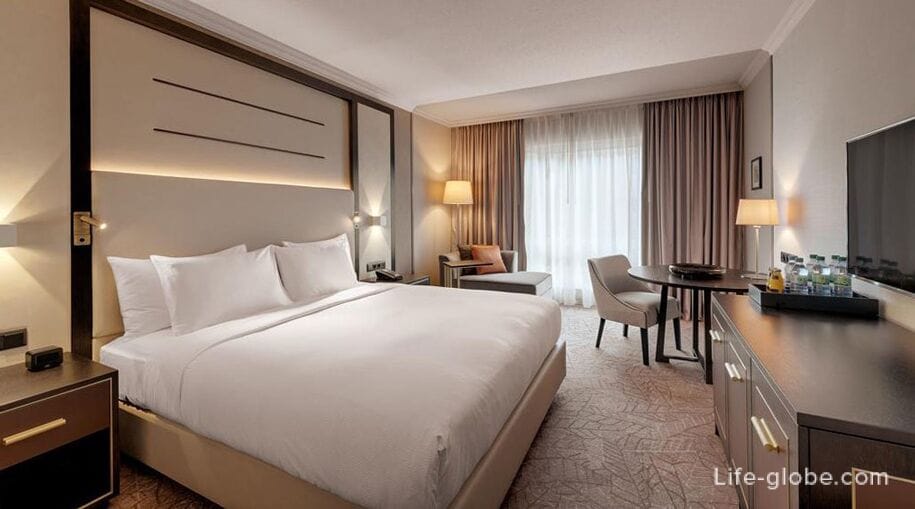
Apartments 83balconyroom room, privat bathroom/kitchen with lift and heating.
In the apartment: a bedroom, a TV with cable channels and an equipped kitchen with a microwave, fridge, washing machine and stovetop. The link apartments
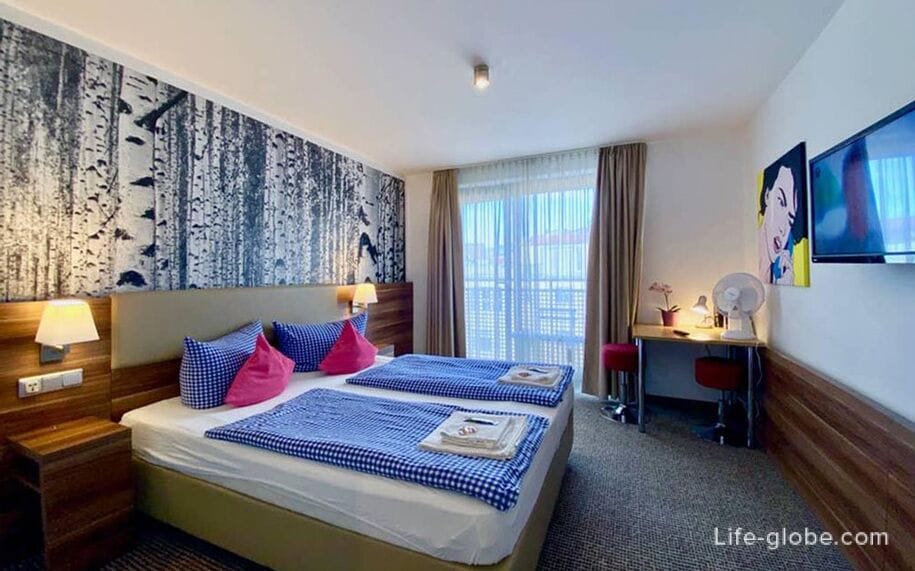
All accommodation in Munich, including in the area of AU-Haidhausen in the city center, you can view and book here